#comic analysis corner with major
Explore tagged Tumblr posts
Text
Recalled updated! Okay okay okay im very excited about this lets gooooo!
HI!
How are yall doing? I've been freed, (then I got sick haha.) We are back with the final part of Directionless and we find the main group inside Hyrule castle trying to figure out what to do next.
With some shenanigans along the way.
Okay, time for the important things! Recalled and all panels belong to @recalled11 and its wonderful artist @l3ominor. Go check it out!
You can find the comic page here!
Now, it is time for snacks and drinks, Let's do this! :D
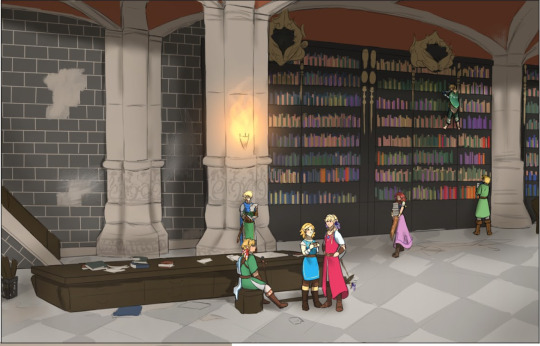
Backgrounds my beloved, you get so much story telling from just this one shot it's great.
MAlon and Time and helping Wild gather information, Sky is resting his leg while flower and Sun discuss something.
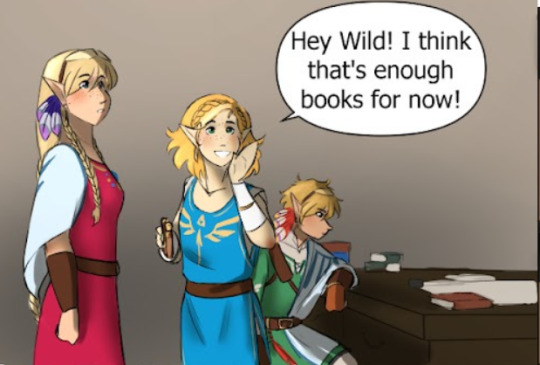
Hmm, Sky's looking very serious right now. What's on your mind blorbo?
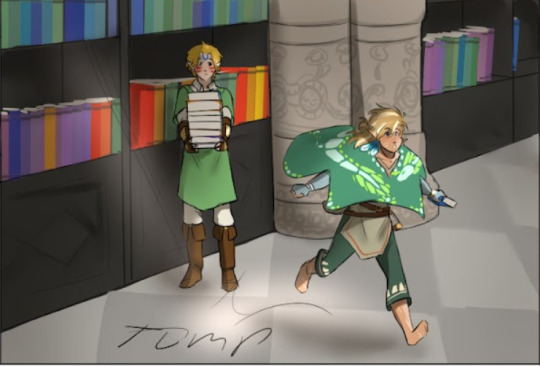
Look at him run. I love him.

Yoink.
This makes me chuckle. I love when we get Wild shenanigans.
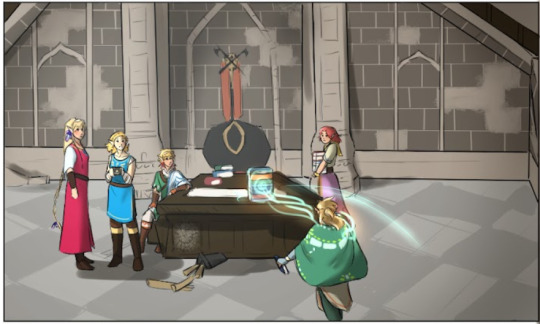
I love how casual he is about this. But I'm gonna note something here.
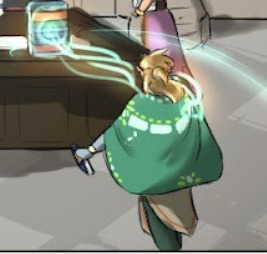
The orange glow of what I assume is ultrahand. Which would be it, If this next panel didn't exist.
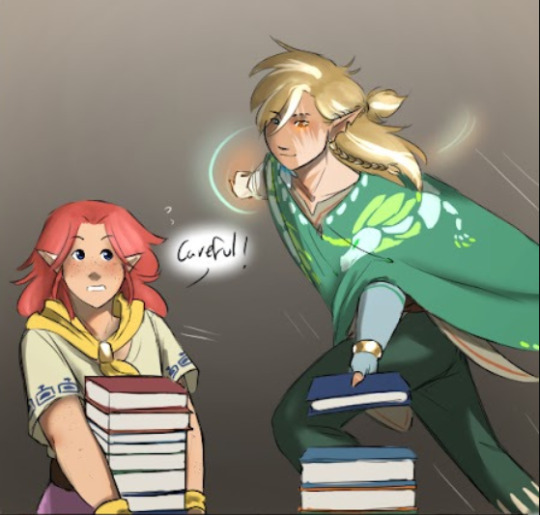
Wild's eye is glowing orange. The eye which changes colour when he's looking at the orb.
So Wild's eye changes colour based on what ability he is using.
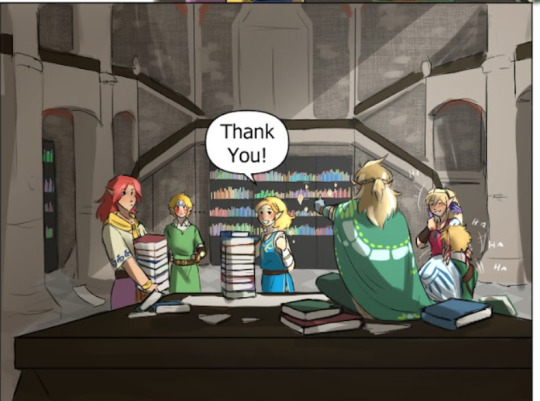
Confusion and joy.
Like ust look at these guys
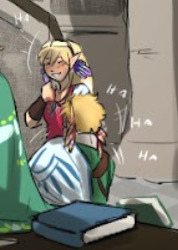
These two are just cackling at Time's expense. And Wild's shenanigans and I totally agree.
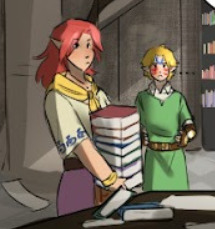
The man is still holding his hands out like he's still holding the books.
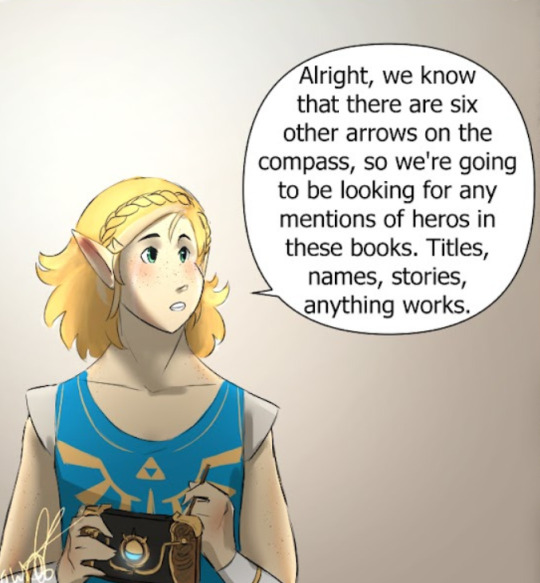
Flower's little pen for her pura pad. I love it. I can only assume She's got a little diagram on her screen which is just chaos
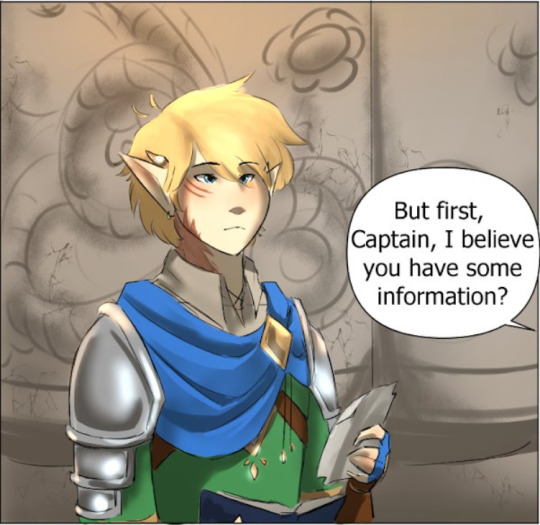
What's on the paper captain? I hope you didn't tear it out of your book.
I wonder if it's a group drawing of the war heroes looking at a reference picture while trying to find information would make sense. Depending on the length of time it's been since he was fighting that war.
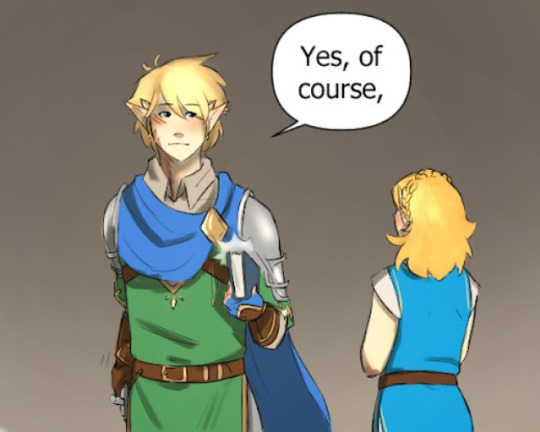
Hiding something are we captain?
I reckon he's trying to figure out just who Time is. And has dug out a picture from the war. (Im unsure, do we get Big Brother Captain? Because I live for Big Brother Captain)
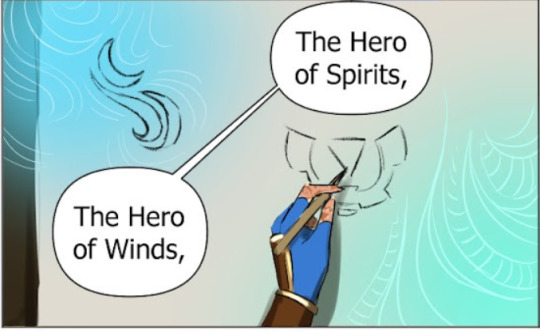
interesting we get symbols for these heroes.
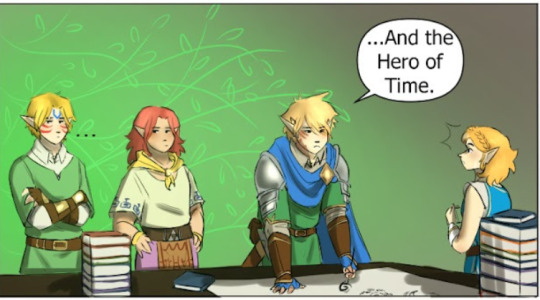
What's the problem Time? Are you looking at someone who you recognise and now he's mentioned your hero title you dont want to talk about it?
Look at Malon, She's like 'You have gotta tell him.'
And Captain looks sad about it. Which tells me that he knows and that he's waiting for Time to approach him.

Thats interesting. We know we get Midna as a companion in Hyrule Warriors. And I assume that Fi mentioned Sky at one point.
I sense some Angst in our future.
Sun putting her hand on Sky's shoulder like that gives me life. i love these two a healthy amount okay.
Also these backgrounds are pretty, I love the triangle behind Sun and Sky here. Thats' Wisdom On the triforce (If observed on the left hand). And considering that sun is in the centre of the frame. I find this interesting. Maybe because they are learning a lot of information right now?
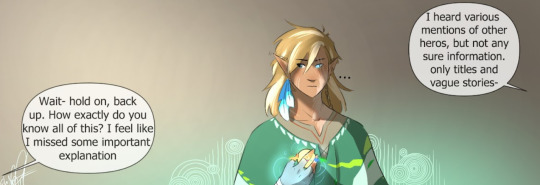
Okay, so you may be wondering who says this line on the left here. I was too. I reckon it's Sky. As a shock response to being mentioned by Captain.
Mainly because From the angle of the speech bubble and the location of the heroes in relation to Wild, it only gives a few heroes. Mainly Sky and Sun.
Sky asking this makes sense as he and sun are the newest to the group at this point.
Okay now its the time for the big one'
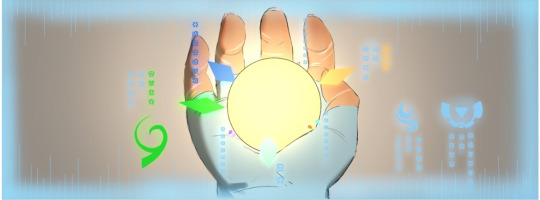
The orb. (Or compass,)
I've taken the time to translate the words I can identify and have extrapolated the rest of them from there. The language is Sheika, and most of these words are what (From what I understand) Is what Wild himself identifies each hero as.
So we have, (Rapid fire style)
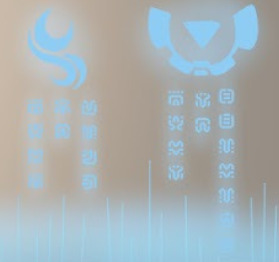
Hero of Wind
Hero of Spriits
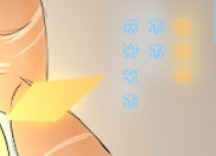
Hero of Sky
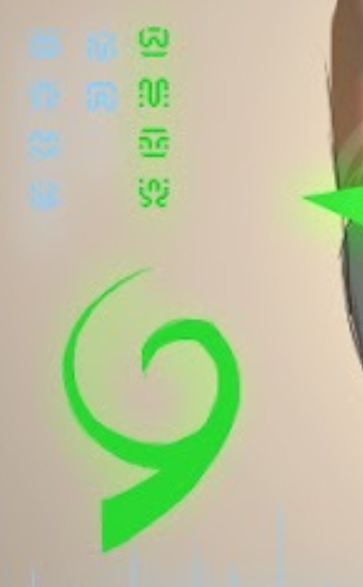
Hero of Time
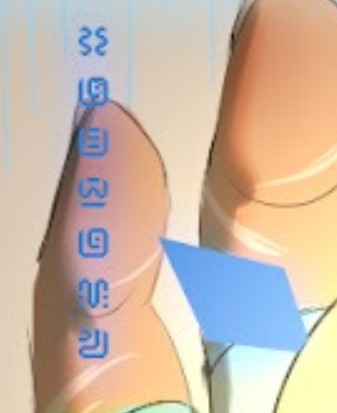
Captain
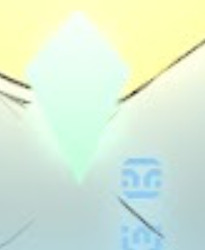
Me
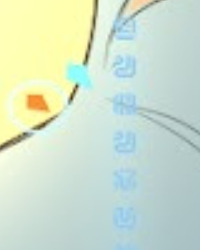
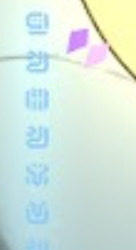
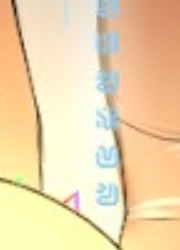
These all say, Unknown.
A little more on this as well.

This circle around this orange arrow. I believe this is the arrow that Wild has chosen for them to approach. Orange if I had to give you a guess is Twilight's colour. Mainly from this bit before.
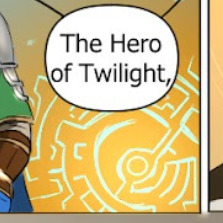
Backgrounds give a lot of information by themselves. This looks like a Twili portal.
The reason Wild chose that is unknown to me. During one of his adventures, he encountered Wolfie. So it makes sense. Maybe he was able to identify his name as Twilight. Or called the wolf that himself.
I suppose the next arc will give us more information!
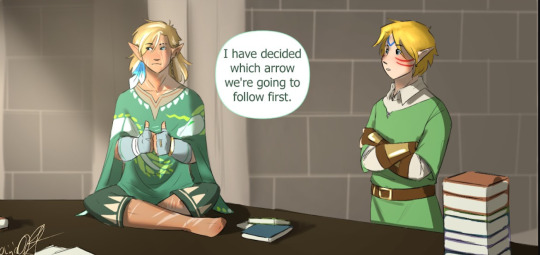
Woo! Adventure time! :D
Okay, thats enough of me rambling.
Thanks for hanging out with me today! I love this comic so it's always a pleasure to write these!
:D
Now I hope you all have a wonderful day!
#recalled#recalled update#recalled Directionless#recalled Wild#recalled Flower#recalled Time#recalled Malon#recalled Captain#recalled Sky#recalled Sun#ramble corner with major#:DDDD#recalled spoilers#comic analysis corner with major#so many characters i love them all#i love making these sm#i wont stop#(unless asked)#Wild's shenanigains give me life and bring me joy#this one was fun#yes i did the translation by hand and then realised it was sheika#i regret nothing
27 notes
·
View notes
Text
Man. Woke up to some absolutely rancid developments in the fandom this morning. I haven't had coffee yet, so bear with me:
Dragon Age: The Veilguard came out almost EIGHT MONTHS ago. Even before launch, the negativity was there — art style complaints, "women aren't allowed to be hot," complaints about the OST, etc. – but once the game was out, the shitstorm really got rolling.
Every article suggested to me was about how "woke" Veilguard was, always with thumbnails of Taash, as if their mere existence in a video game was cause for outrage. Within DAYS, Metacritic user reviews were at a 3 vs. a then aggregate score of 85 from critic reviews. And almost EVERY negative review talked about top surgery scars, Taash, the use of the word nonbinary, and how the character creator didn't allow for "hot" enough female characters.
I ignored it then, because that sounded to me like typical Dude Bro™ capital G gamer bullshit. I stayed locked in and played Veilguard through to the end in less than a week. I loved it, and I was unabashed in my love for the game then, posting about how much it affected me, what I loved and what it gave me to think on. I immediately started another playthrough and began writing fic a few days later.
As of this writing, I have written 254,000 words of fanfic since November 13, 2024. When I tell you I love this game... Let that be the proof.
I thought, surely, as the newness wears off and the spotlight fades, the conversation around Veilguard will change. And... I guess, it did. It got worse. A very vocal subset of fans – of whom I would previously have considered myself a member – decided that this game and its treatment of our sad little meow meow (affectionate) was a personal attack. "Fans" started talking about the developers like it was celebrity gossip and wrote honestly brutal and horrible things about NORMAL PEOPLE doing their JOBS!
Things were circling the drain then, and I read the signs well. I blocked some folks and merely unfollowed others, some I'd been following since the start of this blog back in 2017. We disagreed about Solas in Veilguard in basically every way, to the point where it was negatively affecting my love for the character. I extricated myself quietly (not that I'd been a huge presence to begin with).
But, I'd spent the majority of 2024 consuming all the Dragon Age tie-in media. ALL OF IT. And Veilguard relies on tie-in media a lot, So, I started posting about that, and how Veilguard did a good job, actually, of using that media and how having read the books/comics only heightened my experience with the game.
That went... poorly. I blocked some folks who accused me of things I didn't say and who clearly weren't reading my analysis with any sort of positive intent. I was Wrong and my interpretations were Wrong and how dare I have the audacity to love a video game of a franchise I have been hyperfocused on since 2009??? Apparently the game is bad and my reading analysis and comprehension skills are Bad and I should be yelled at for it.
(y'all, I went to school for English/Writing, am a librarian by day and a professional specfic author by night... like. You don't have to agree with my analyses, but... this is what I do???? I read things and think about them and write about them and help others do the same???).
But, I blocked and moved on with my life. And I have been absolutely PROLIFIC with that block button. And I've largely avoided any backlash (yes, backlash – to deny its existence is willful ignorance and, frankly, dishonest) because of my willingness to block any and every shit take I've seen on this site.
I've stayed in my corner, loving this game with an absolutely beautiful community of folks who encourage and nurture creativity. Word games, prompt tags, weekly events. It is a wonderful place to be a Veilguard fan.
But, it HAD to be a carefully curated corner, because even a step outside of this bubble was filled with so much hate, and ANY attempt to engage or interact with a Veilguard positive lens was met with complete vitriol. And it has just agitated itself into a rabid froth of cruelty. Not just toward the game, but devs and fans.
Dislike of a game fermented into personal attacks against people who LIKED A VIDEO GAME and didn't think it deserved to be shit on so badly that an entire development team lost their jobs. That people pointing out how VITAL the queer rep in Veilguard is in THIS moment shouldn't be attacked. That pointing out how the game focuses on community action and smaller, personal stories of hope and perseverance is actually REALLY IMPORTANT RIGHT NOW and shouldn't come with a risk of being doxxed.
Eight months. It's been eight months of this behavior and it is only getting worse. I'm not sure what I wanted to say with all of this. I'm mad. Worried for my friends. I'm disappointed. And also... man. I still love Dragon Age. Have loved Dragon Age since 2009. Nothing that happens on tumblr will make that less true.
But, if you don't love Dragon Age any more... maybe... move on? Find something you do love? Because, as angry and disappointed and worried as I am... I'm also sad. I'm sad that so many people are seemingly obsessed with something they don't even like. That's no way to enjoy life. We only get so many days on this planet and spending them so angry and hurt that you want other people to be angry and hurt... it's sad. Not in a like... pathetic way, but in a genuine, heartfelt it-makes-me-feel-sad-that-others-feel-like-this kind of way.
70 notes
·
View notes
Text
Cardcaptor Sakura Clear Card Chapter 79: Comments + JP-ENG translation differences

Welcome back to our monthly appointment, CCS fans! This chapter comes right after this month's full moon, the Hunter Moon! (lol yes I will feature the name of the relative full moon till the end of the story). And speaking of the end of the story, I will start this analysis and translation post from the end of the chapter, where I found the confirmation to the rumour that had been going on for hours before the official release on Comic Days:
yes, dear readers, this is not a drill, Cardcaptor Sakura Clear Card Arc will end with chapter 80, after 7 years of serialization! 🎉✨ When *the last chapter* is announced, there's no turning back! No more sudden announcements of extensions! 🥹 But at the moment of writing this post, no mentions have been given about any "epilogue" or extra chapters that might be serialized in the upcoming months leading to the big release of volume 16 on April 1st!
On the translation side, I have to sigh in relief because no major misunderstandings happened in the ENG version, just some minor inaccuracies! I was kinda scared because this chapter is pretty important and complex in itself.
And let me say that what happened in this chapter 79 definitely marks the end of the climax, so I can totally see it ending in next chapter. The chapter tackled some very important thematics regarding the presence of "evil" in this series, that I will talk about extensively in my analysis.
The announcement today made me already a bit nostalgic and sad, but I want to strive hard to accompany myself and all of you towards the end of this arc with excitement and a smile, therefore I won't let myself be prey of the sadness yet and introduce you immediately to the gif of this month, because there's a lot we need to talk about and analyze and we can't waste time!!

This is entirely dedicated to our protagonist and heroine Sakura-chan, because damn, she really slayed this chapter!!! Under the cut to see what miracles she made happen!
The Color Page
My dear readers, after years of countless pleas on my social media, after being let down month after month, CLAMP FINALLY GRANTED ME A COLOR PAGE SOLELY DEDICATED TO KAITO AND AKIHO TOGETHER ON THE SECOND-TO-LAST CHAPTER!! Yaaaay!! Excuse me while I celebrate this event here in my little corner, especially after having a rough month! 🎉🎉🎉 I hope my followers thought of me when they saw it? Like "finally she'll stop asking for it" (breaking news, I'll keep asking for more even after the series is over) 😂 It took them 79 chapters to do so and honestly I'm laughing because....yes, I admit it, I expected another vibe for such an important color page coming after such an important emotional scene in chapter 78, but honestly the first thing I thought when I saw it was "....they had to wait 79 chapters for this? 😧" 😂because it's very very "regular", I think it would've been ok for this to come out long ago. LOL I'm being brutally honest here, I hope no one gets offended, especially because that pet peeve aside, OF COURSE I love this precious color page to bits, and I know under its "normalcy", its got a very important meaning to the both of them.
Akiho and Kaito are depicted together clearly during one of their travels....but the question is, is this from the past? Or the near future? I'd daresay they look the same age they are now, so this might probably be a foreshadowing for the future...? They'll keep travelling the world? But seeing the content of the chapter, this might also be just a call-back to their memories together and everything that they experienced during those travels, tightening their bond. Travelling the world is, after all, really their thing, their element. I really like Kaito's expression, with his usual smile that almost turns into a smirk, he gives off a vibe of being finally free to express his emotions. He looks carefree, and that's really something for him. Akiho, on the other hand, is always so much more expressive than him and you can literally feel the joy and excitement emanating from her delighted expression. Travelling with him makes her happy, so yes, should this be what awaits them in the finale, it's fine by me as long as they're happy (I'm rooting for the other option though, the "stay in Tomoeda with your newfound support network" route).
But as you know, I always have to analyze the color pages a bit deeper, especially when they're about these two. And since I had to keep myself distracted, I made a bit of research. Other than the "travelling" vibe, this illustration gives off also kind of a "vintage" vibe (which is another strong element to Akiho and Kaito). It seems Akiho is dressed in a sleeveless coat with cape and wearing a bonnet fully inspired by those worn by children in the second half of the 1800s, in the Victorian era.
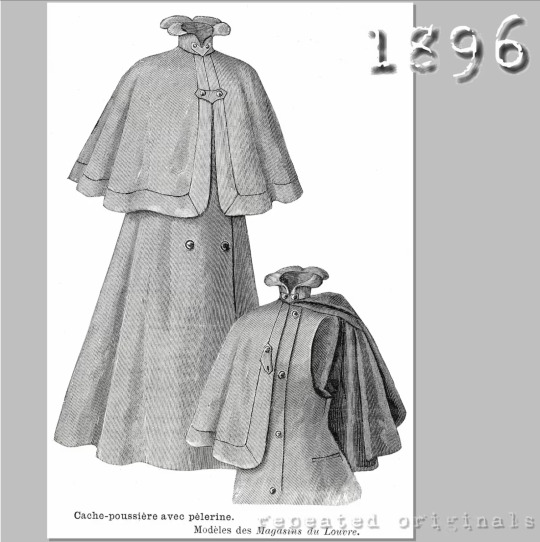
(pic courtesy of Etsy) This is a model from 1896, for example. When I pinpointed the period, I immediately thought "uh, the Victorian era is also the period when Alice in Wonderland came out", although that was more towards the 1860s. I found it really interesting and a nice touch for this illustration with a retro flavor (the suitcase and purse also look kinda vintage).
But another thing that immediately caught my eyes were those cute birds landing on Kaito's shoulder and Akiho's bonnet. I immediately tried to look what kind of birds they are, and it seems like they could really be eastern bluebirds, typical of North America. Searching further, I found out that in several cultures bluebirds are harbinger of happiness and symbols of hope. I couldn't honestly have thought for a more fitting symbolism, for these two. Especially cause birds often are associated with an imagery of freedom, and this is something else that these two need, after being hunted by evil people for so long. They really do look free, in this color page. Also, the presence of the birds in this color page immediately brought me back to the color page of chapter 62, where we can see baby Kaito in a wintery setting, sitting on a lamppost, extending his little hand to a swallow coming to him. Swallows are a symbol of hope and bring a message of "spring is coming", and continuing from that message of hope, of "spring is coming for you too", we can finally see here in chapter 79 our Kaito with his true happiness, symbolized literally by the birds most associated with happiness. Another thing that caught my eyes is of course the lily depicted on the cover of the book Akiho is holding, a nice callback to Akiho's mother and Kaito's torment, Lilie. She's always going to be with them ❤️
The Japanese editorial text over the picture is an excerpt of what Momo was musing to herself in chapter 39, while imagining to talk to Kaito: "You traveled with her, and spent time together with her". I think CLAMP chose to feature this line to indicate an important thing that will be restored at the end of this chapter.
Everyone Is Doing Their Best
The chapter starts with a panel showing some light coming off Yukito's house, and we find out that even Touya fainted, exhausted by the effort to keep time stopped as much as possible. Ruby Moon is cradling his head on her lap trying to assist him and "recharge" his magical power, in hope to be able to maintain time "stopped" a bit more. In fact, if you notice, the "black covering" that symbolizes the time-stopping spell isn't completely destroyed yet, but only riddled with "holes", an indication that the spell is still somehow active, even if feebly. I imagine this might "slow down" the attacks, which are still coming but probably not at full speed like they would if the spell came undone completely. I have to point out immediately a mild inaccuracy in the ENG version, that I want to specify in order to dispel extreme theories before they're born: no, Ruby Moon didn't give up all of her powers to Touya, the verb used here is simply 補える, "can replenish (your magic)", not "give all".

Touya doesn't lose his sense of humor even in a dire situation like this, and comments sarcastically "What are you, a battery?", a clear recall to the whole "batteries" matter that came out in the un-rewritten world. Touya isn't supposed to remember about that, and he probably doesn't, but this is just a way from CLAMP to show that even in a situation where memories have been rewritten, some things will be unconsciously said again, because they're just meant to happen.
Ruby Moon calls for assistance from her "brother" Spinel Sun (love how even in these true forms, she still calls him "Suppy"), whom rejects the appellative of "battery" but agrees to give her a hand with "recharging" Touya to keep the spell up a bit longer. Everyone looks outside, only one thought in their minds, which is voiced clearly by a serious Tomoyo: "Sakura and everyone else are fighting with all they've got". I have to point out a typo here in the Japanese version (nothing serious, it can happen and will be surely fixed in the tankobon version): Tomoyo calls Sakura "Sakura-san". I loved the "sparkles" around Tomoyo's eyes, as if indicating that her extraordinary intuition is "at work" and just telling her that, even if they can't see them because they're quite far away, Sakura and the others are doing whatever they can to stop these attacks. And the fact they can see the attacks, but not their friends and their condition, must be really hard to witness, for all of them. But no worries, there's Touya nii-chan who's always ready to lighten the mood even in this challenging situation, joking that "If they don't get back before the curfew, they won't be getting their snacks tomorrow!". Here the ENG adds "squirt" to make Touya refer specifically to Sakura, but truth to be told, in the JP there's no subject, so he might be referring to everyone. It's amazing how he's able to keep his spirit up and be sarcastic even in this situation....he really believes in his little sister so much!
I'll Make Them Forget About You

Back where our heroes are, the attacks keep coming relentlessly, countered by Syaoran, Yue and Kero in tandem. Sakura reflects on the fact that the only transparent Cards she's got left are these two she's holding in her hands (Time and Rewind) and Flight. This statement leads me to believe that when Record transformed into that crystal that entered her, that meant that the Card completed its duty and disappeared inside of her. But Sakura isn't worried at all, because she knows that she can create more Cards. Yessss, this development that I've been anticipating since quite some time is finally here! ✨🎉 Sakura seems to finally have a concrete plan, but before proceeding, she needs to ascertain something. She asks directly to Kaito: "The people who are using these spells were trying to hurt you, right?". Kaito, with a pensive face, answers affirmatively.

But it's when Sakura asks again "Were they trying to hurt Akiho too?" that his expression turns really painful, the background after him portraying well his raging emotions and, while Mokona-sensei chose to leave Akiho hidden by Kaito's black wings in the previous panels, now she finally shows how both she and Kaito are holding onto eachother, while our boy answers with a "...Yes" dripping with sorrow. It really squeezed my heart with pain, this scene. Because as long as Sakura was asking about him, his expression was pensive but almost as if it's something he's used to, that didn't shake him too much. But when Sakura mentions Akiho, god, that wrecked him. Any mention, any reminescence of what those bastards did to her and how they were chasing after her to put their filthy hands on her again wrecks him even now, and it's like Mokona with her visual skills is showing how Kaito seems to be holding Akiho a little bit tighter, while he answers Sakura's question. I also have to point out something that I had noticed already from last chapter, but a panel tricked me into believing I was just seeing things: CLAMP here use a dark screentone for Kaito's eyes, that he never had before (actually, no other character in CCS got this effect in their eyes). This effect will be used on him for the entire chapter.


And it seems like it's the very same screentone that was used for the dragon. I think this might be an indication that the wings aren't the only reminescence of his dragon appearance!
Sakura shows once again an incredible empathy that allows her to go right to the heart of the issue without investigating much. If Kaito rewrote an entire world, and if it's true that Akiho in the previous world didn't have all the love and familiar support she's got now, it means that she was probably in danger too. And seeing as these people are attacking them now because they freed Kaito from his "punishment", Sakura doesn't really need much to make 2+2 and understand the situation. Sakura believes in Akiho, therefore she believes in Kaito too, and knows that if he came to this point it's because they were in a desperate and dangerous situation.
Showing an incredible insight, Sakura shocks both Kaito and Akiho by asking:
Sakura, JP: "In that case, can I make those people forget about you both?"
Because our girl needs to make sure that the plan she came up with won't have any undesired consequences. But most importantly, she needs to have their consent. She reiterates this once again, actually she will make sure to ask Kaito and Akiho's consent 3 times in total. She says: JP, lit. "If going back to before the world was rewritten will put you through hardships once again, then, can I just make them forget?" Kaito is even more shocked, because he finally understands Sakura's intent. A generous, selfless intent born from a loving heart. Our girl wants to make sure that these two will be safe and sound once she fixes this situation. She can't take risks, because their happiness is all she's really caring for right now. And in his shocked expression, I can also see some kind of "omg YES, PLEASE" vibe. Because probably, having those terrible people forgetting all about them is everything he ever wished, but couldn't achieve. And I think it's really funny how we berated Kaito so much in the past chapters for making Akiho and the others forget facts that happened before and forgetting about him, but here Sakura just takes "inspiration" from him and actually decides to use that same "trick" in the right way. Because it's not fair that it should be them, the abused people, to forget about their most important person, in order to achieve a happy life for at least one of them. It isn't fair and it isn't right that Kaito was driven into making all the mess that he made, pushed by desperation. The abusers, that clan and Association of magicians, should be the ones forgetting.
But this is Cardcaptor Sakura Clear Card's finale, and Sakura definitely hasn't finished with being amazing yet, she actually just started. Her very strong power at this point allows her not only to see things that were difficult before, but also to connect the dots more easily thanks to that renowned instinct that I've always talked to you about, and that she learned to finally listen to.
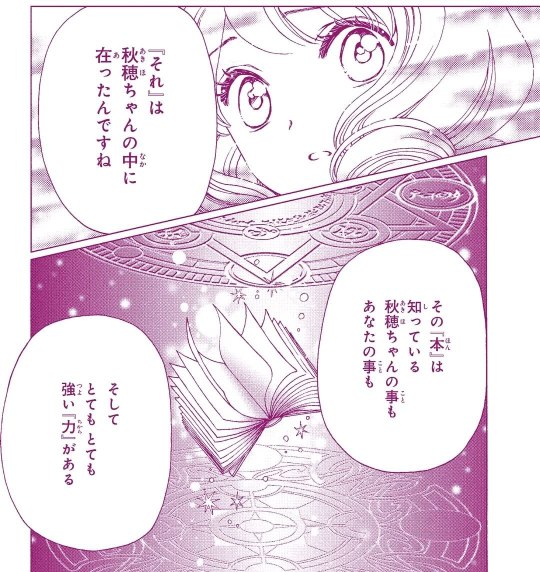
As if she were seeing through him with X-rays, she confidently affirms that there's a book inside of him, a white book where you can inscribe magic on. And she also knows that that same book was inside Akiho, once. I guess this might be even coming from past memories of the unrewritten world (do you remember when, before the play started, Sakura said that she could feel something inside Akiho?). Akiho of course is shocked to hear that, and from her expression you can almost feel the chill that went down her spine in that moment. Sakura affirms that this book knows both Akiho and Kaito (thanks to the fact that it was inside both of them - something that I've always found painfully heartbreaking but also quite moving, for my ship), and it's got a very strong power inside of it. These will be two crucial things for Sakura's plan. In fact, our heroine is hellbent in attempting something pretty arduous: utilizing that artifact's power to create a new Card. For impartiality, I have to point out that the ENG added (completely on their whim) a "you, her special person" that isn't there in the JP version! Of course it's all the better for me, since they repeat (finally with the right adjective) that Kaito is Akiho's special person, but it's kinda funny that they messed it up so much in the previous chapters, and now they're adding it where there isn't any mention of it!
Sakura will be using a tool that knows the both of them, therefore she is sure that her plan will succeed, because the Card will know what it will need to erase. Sakura asks for Kaito and Akiho's agreement one last time. After hearing how those people wanted to hurt them both and even implanted the same magical artifact inside of her, Akiho is quite resolute and doesn't have any doubt: on with the wiping off! It doesn't matter who those people are, they've tried to harm her most important person and her too, so she doesn't really seem to give a damn about proceeding with this plan. Kaito, on the other hand, seems to be giving a more lackluster affirmative reply, but it's not that he's uncertain: he's just still riddled with guilt for all the mess that he's done, and he's probably realizing that now Sakura will need to put herself on the line in order to fix this and protect both of them, hence his sad face.
Still surfing the confidence wave, Sakura guesses that once those people have forgotten about Akiho and Kaito, then the magic arrows will stop too, and Kaito confirms that: forgetting about the person who had the Seal of D enforced on him will be equal to "undo" both the activation of the Seal itself (when Kaito removed the book from Akiho) and also the rescission of it (what Sakura did when she freed Kaito from the cage). This will therefore stop the arrows too, because the Seal wouldn't have been triggered in the first place. However, Kaito warns her that, although time is still barely "stopped" (because the time-stopping spell is still weakly on), it's necessary an enormous amount of power in order to do what Sakura wants to do. I have to point out another inaccuracy in the ENG translation in this part, which makes Kaito say "before things could get worse" and I have the feeling they misunderstood the word 辛うじて, "barely" or "narrowly", which is also written with the kanji of 辛い, "hard" or "tough". So Kaito isn't saying "before things could get worse" but actually meaning "although time is barely stopped".
Sakura doesn't seem to be scared by Kaito's warning, and activates her wand without a second thought, and immediately we can see that her task wil NOT be easy, as she can feel the strain almost right away.
Here we go with another inaccuracy of the ENG translation:
Sakura, ENG: "Great book, please show yourself! My power alone won't be enough...!" Sakura, JP: "The book....doesn't want to come out. (it's too difficult to pull it out) with just my power..."
Basically, Sakura isn't begging the book to "show itself", she's actually actively trying to pull it out of Kaito, and she's aware that it's opposing a lot of resistance, and her power alone isn't enough to take this damn book out. Sakura refuses to give up, because everyone else is doing their best too. Yes, everyone else.
And that's when CLAMP decided to bring us a big surprise for this finale.
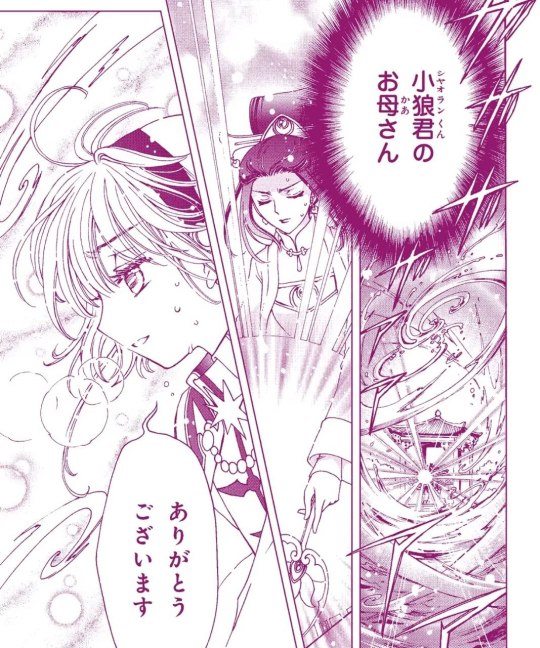
A pair of hands seem to be appearing next to Sakura's, as if a spirit is hugging her from behind. We can see the famous fan that we learned to recognize so well ever since her first appearance in Movie 1. Sakura feels immediately the same magical power of Syaoran surrounding her, and with her instinct she finally recognizes her: it's Syaoran's mother, YELAN!!! We can see her, sweating and all, in her sacred chinese pavilion, lending her power to help in this difficult task.
What a great, welcome surprise for this finale!! You might have heard me saying on Twitter that Clear Card is really a celebration of motherhood, with this constant presence of mothers and mother figures who try to help these kids growing up without removing their right to choose for themselves. And since Yelan is the only mother figure who can concretely help Sakura in this moment, with her immense power, I really loved to see how this woman didn't hesitate to assist her future daugher in law. For any SyaoSaku fan, this scene here is a huge thing. We have seen in the anime how Yelan doted on Sakura ever since she met her in Movie 1, even before her own son realized his feelings for this girl. Yelan and Sakura haven't met in the manga yet (and hello, CLAMP, now this is a good chance for letting that happen, after the madness is over), but the woman didn't hesitate a moment to lend her power. I can really imagine how along these two will get, in the future. ❤️
Sakura thanks her aloud, while her eyes show that she's really really tired. Yelan's assistance is finally effective in summoning the artifact book out of Kaito, and we see again those countless book pages that we saw both when Akiho used to go "berserk", and also in the most heartbreaking scene of chapter 70. Kaito, still holding onto a worried Akiho, seems to suffer physically from this removal, and I can't understand if it's because removing something magical from inside is naturally painful (we've been shown something like that before, Syaoran crouching to the ground in pain while the Sakura Cards were being removed from inside of him) OR if the removal of the artifact also triggered his poor health conditions in which we left him, before he disappeared in chapter 70.
Sakura tries with all she's got and finally manages to turn the artifact into its "true form": a book filled with countless of spells written in strange magic runes.

You have spotted it, right? ☝️ I haven't seen many fandom reactions yet, but I guess this "cameo" made more than one person scream: it's Fay D. Fluorite's tattoo, yes! This page of the "book" is probably describing the procedure to cast that tattoo (which was also a kind of "seal", if I remember correctly). So that spells exists in this CCS world too! 😅 The magic Sakura is weaving starts "working" on the book, literally removing the spells from its pages and turning them back to their original form of magical books (remember that the Squids used to say that they would inscribe "magic books" and their power onto Akiho?).
Then, solemnly, we hear probably for the last time ever the magical incantation that accompanied us in the beginning of the story, used by Sakura to secure the strange manifestations of power into a transparent Card:
ENG: "Force without master, heed the call of my Staff of Dreams and become my power! SECURE!"
The countless of books and all this tremendous amount of power get secured into the birth of a new Card: BLANK!!!
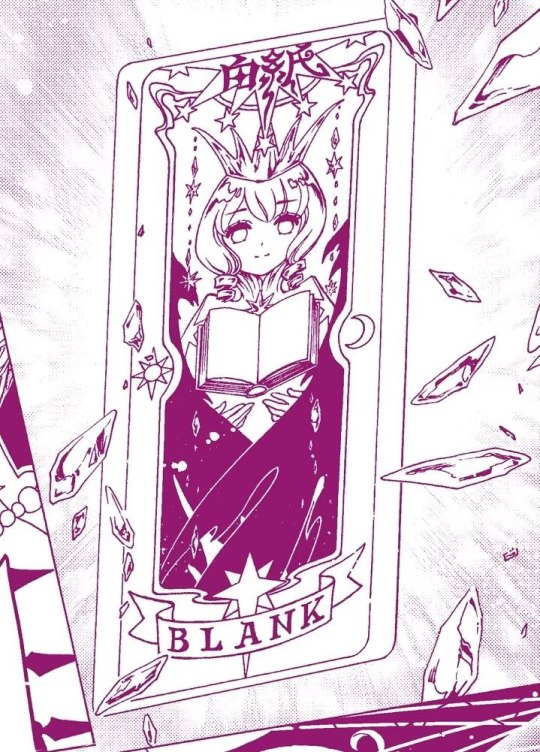
Blank got the human appearance of Akiho, but also the protective wings of Kaito. The girl is holding a book (of course, how perfect for her) which is the representation of the artifact that was inside both Kaito and Akiho. This card is really so meaningful for someone like me who loves Akiho and Kaito. It's representing them united in their suffering (the artifact) but also in the hope for a better future (Akiho is smiling and the Card will be used to grant them safety, away from their abusers). I've always imagined that one of the last Cards Sakura might have produced would have Akiho and Kaito's elements, and here it is.
Also, how AWESOME is that Sakura managed to dispose of that damn artifact and succeeded to use it for Kaito and Akiho's sake, and turned it against the monsters who created it??? HOW. AWESOME. IS. THAT!!!!
Producing the very first consciously created transparent Card sucked almost all of Sakura's power and strength, and she's close to fainting, under the terrified eyes of Akiho, who lets go of Kaito for a moment in a gesture of going towards her "sister". But Sakura isn't done yet, no. She can't give up yet because her job isn't done.
And I Will Make Them Remember About You
Sakura wants for Akiho and the people who care about her (the ENG decided to translate this with "the people SHE holds dear") to remember who Akiho really is. She wants basically to "undo" what the rewriting of the world caused on the people who know Akiho, making them believe that she was born into the Kinomoto family and that she was Sakura and Touya's sister.
After pondering for a while and discussing with my friends over at my Discord server, I decided I'm not gonna go out on a limb and assume things from this decision, because I definitely NEED to read the next chapter to see how much Sakura intends people to remember, with this move. It's really not clear at all, as of now.
Anyway, other translation inaccuracy incoming!
Sakura, ENG: "I'm going to make another new card for that...and I might not have the power to do it alone" Sakura, JP: "It might probably be really difficult to create one more new card with my power, right now..."
As you can see, the nuance is different, because Sakura in the JP addresses how it's almost impossible for her to create another new card in the situation she is in right now, exhausted and all.
That's why, very cleverly, she's going to do something different. (My gosh how proud I am of this girl!!)
Saying "But these two Cards will surely help me", Sakura skillfully manages to merge Time and Rewind to create a new Card, not from scratch (which requires more power) but using what she's already got: and that's how the REMIND Card is born!!! The name of the Card originated by just replacing the "W" of Rewind with the "M" of Time. Ingenious, isn't it???

And as the two Cards merge, they give us lots of flashbacks, like the "effect" used here resembles a lot the one that used to happen when Sakura was changing the Clow Cards into the Sakura Cards back in the old arcs, or how the merging of two Cards seems to also be a callback to how the "card without name" and the "Nothing" merged to create HOPE in the very last minutes of Movie 2! What a nostalgic trip down the memories lane!
And the appearance of this Card is even more touching, because it features Syaoran (with his current age) holding Nadeshiko's pendant watch. I found that so sweet, especially coupled with Yelan's assistance to Sakura in this chapter. Yelan associated with Sakura, and Syaoran associated with Nadeshiko. How sweet. And when you think that even Lilie, Akiho's mother, was associated with Kaito, you really can realize that this is some kind of "theme" that CLAMP seemed to be wanting to portray in this story.
I Can't Be On Everyone's Side
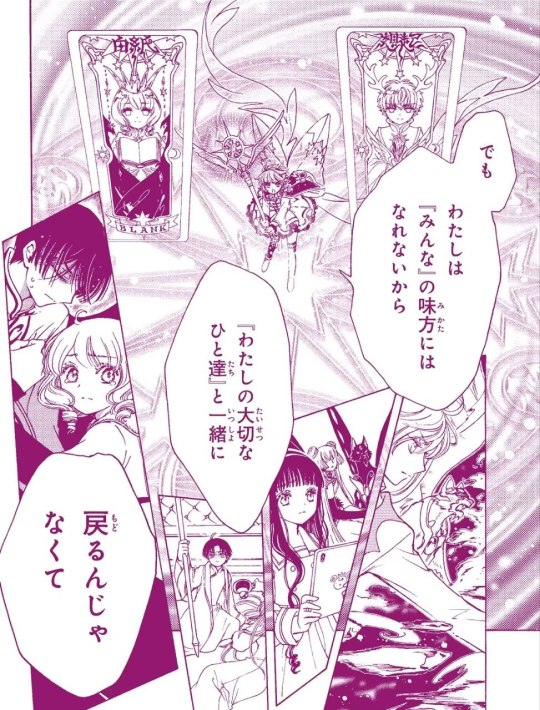
And now, the scene that I think is worth the whole chapter, but probably the whole Clear Card Arc in its entirety. As usual, with important scenes, I'll use the literal translation from Japanese:
Sakura, JP: "It might not be right that there'll be people who will forget things (after this), but....I can't be everyone's friend/ally/can't be on everyone's side. So I won't go back...but actually, along with the people important to me... I WANT TO GO ON"
Wow. Let that sink in.
Sakura, of Cardcaptor Sakura, just came to the realization and spelled out clearly that she cannot be on everyone's side. That she cannot be "everyone's friend", like in a cheesy fairytale.
And I really, really, want to thank CLAMP-sensei for this scene and this line because for a period, long time ago, I was worried that this story would go down the "let's be friends" or "let's show sympathy to them" route. But as the chapters continued and the things CLAMP told us about the Association and the Squids were more and more cruel, and they made me more and more sick, I started to realize that there was simply no way CLAMP could've had Sakura try to justify or compromise with them. Because when cruelty is real, there's no compromise to be made.
This scene also shows how Sakura realizes for the first time ever that in her world, contrary to what we all believed previously, evil exists. It might not touch her or her "entourage" directly (and she's really blessed for that), but it exists out there and it's hurting people, people who can also become really important to her. And she decides to not stand idly by, blessed as she is with the luck of not experiencing that evilness, but actually using whatever it is in her power to bring those suffering people to safety.
Sakura cannot fight those people on equal terms. She's just 13, and although her power is very strong, she's still inexperienced. Moreover, she cannot really bring herself to deny her current nature and use violence on other human beings. That's not Sakura. I want you guys to reflect on this because I know that one of the favorite things expected for this finale was to have a direct magical confrontation with the true villains of this arc, defeating them and restablishing the peace. And I am sincere when I say that I would've wished for the same too, because you know how much I love Kaito and Akiho, and how much I was disgusted to read about what they did to them. I've spread my "burn the squids" gifs all over the fandom. I wanted someone to vindicate them. But not here. Not in this manga. I realized that after the initial satisfaction, I would've probably felt like the series would've been "defiled". And that's exactly what happens when you answer to violence with more violence.
Sakura just could not go hunting those bastards down and defeat them in a magical battle. Because, powerful and corrupted in their greed as they are, the only way to "fix" this situation would've been to exterminate them. I just could not picture this story to cross that boundary, no matter how much the bar had already been raised well over what we initially thought.
So, if someone out there is disappointed by this outcome, I'm sorry for you, but it was just not meant to be and I'm actually really glad that this series kept true to its fundamental values. Of course it would, CLAMP really do care about this series and they know very well how far to push the plot, and when to actually stop.
So what is the role of Akiho's clan and the Magic Association in this story, especially considering that we never saw their faces at all? Talking with lots of fans in these years, especially Japanese, I've come to the conclusion that they are not in this story to fill the "villain that needs to be deafeated" role, but actually they're a representation of abusive families that smother and suffocate their children with expectations, completely disregarding those children's natural inclinations, and abuse them when they do not meet such expectations, but also the society as a whole, that looks at you only basing on how it can take advantage of you. Which is exactly what happened to Akiho and Kaito, driving them to very dark places. The absence of faces for those characters makes it possible for the readers to see the Squids and the Association as the representation of whatever environment they relate the most to. It can be family, society, school, workplace etc... It also helps us focusing on their actions, rather than their faces, and not attribute any prejudice to them (because of religion, race, skin color, or whatever other attribute they could have).
Seeing as the story treats them more like a concept, than an actual entity, it's basically impossible for Sakura to defeat them (and their great power is an indication of that impossibility). Just like in real life, darkness will always exist, along with light. Good and evil will always be side by side. It's bigger than any of us. Then, what can we do, in a situation like this? What Sakura is choosing to do, here, is not to confront directly with violence these people who are way out of her league, and not even to sit back and look, but actually finding a way to make them forget about her friends and keeping her friends safe, granting them the possibility of living a happy life, finally away from the darkness of the past, healing the wounds on their souls together with the people they love and who love them back. Because even if you've been abused in the past, you can still hope for a happy life.
The focus here is all on helping the abused people. And Sakura, in order to do that, is okay with coming to terms with the fact that she can't be on everyone's side, and she needs to choose. In the end, the thing that really matters the most is to GO ON with your most important people. Not going back to what is lost, but going forward. And I know that this is such a CLAMP theme, and I'm glad that they reiterated it in this arc. When I say that Clear Card brought Sakura so much more closer to what's usual for CLAMP, I mean this.
The panel with Sakura raising her staff and shouting she wants to go on is absolutely beautiful, with those wings growing so big and unleashing Sakura's power in a storm of cherry blossom petals.
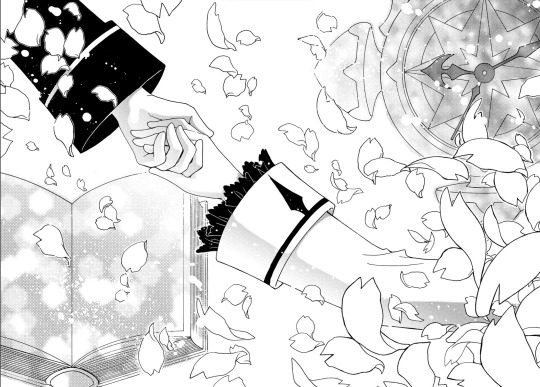
Sakura is exhausted, she finally reached her limit by using her ultimate magic. As she faints, her eyes just make it in time to catch a glimpse of her prince, the love of her life grabbing tightly his girlfriend's hand, to not let her fall, while the watch of Remind and the book of Blank do their job in the background. And I really loved this spread too, because even if it's not a conventional romantic scene made of physical display of love, this in my opinion is even more powerful. Many were reminded of Tsubasa, but I was also reminded of the long time those two spent unable to touch one another, and this scene here seems like a catharsis for that hardship they went through. Syaoran will always catch Sakura everytime she falls, he will always be there to grab her hand, no matter if he can really touch her or not. Cause his love is stronger than any kind of impediment. He will always be by her side, no matter what. When she's exhausted by her heroine's duties, she knows that she can always count on him to support her.
And speaking of "always be by her side", I just can't avoid mentioning how Akiho and Kaito stayed "glued" to eachother for the entire duration of this chapter, protecting and supporting one another. Kaito, in particular, kept holding Akiho even as Sakura's magic was hurting him like hell, because it was extracting the book from him. Even in excruciating pain, he did not let go of Akiho, intent in protecting her and keeping her safe in his hold. Akiho let go of him just for a moment when she was scared out of her mind for Sakura, but went back to him when she saw that her "sister" was hellbent in completing her task no matter what. Kaito, as the good "moon boy" he is, is someone who shows his feelings through his actions rather than words, just like Syaoran. And his constant grip on Akiho in this chapter, such an opposite act compared to how he used to stop his hand everytime it started reaching out to her, told me all that I needed to know about him: she's his most important person, and he will never let go of her, ever again.
Sakura wakes up in her bed. The scene is a direct parallel with an almost identical scene in chapter 3, as you can see here:
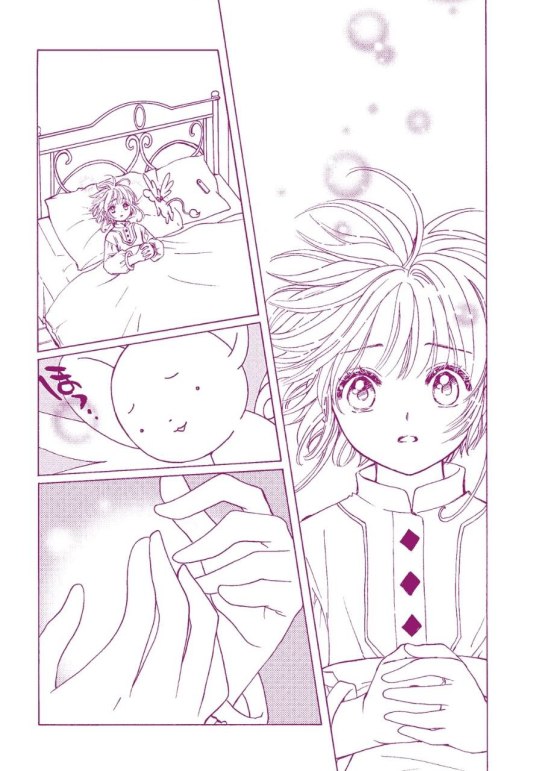
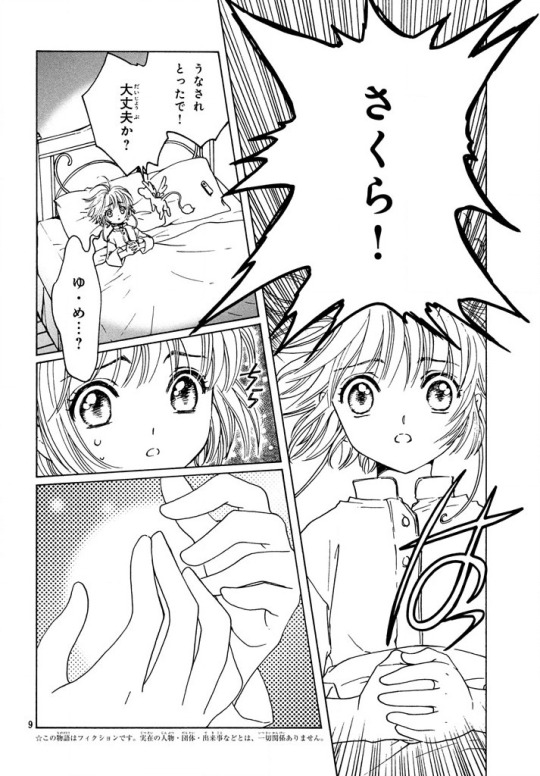
Kero is next to her and is relieved to see her awake, so he goes to shout in the hallway, directed to Touya, that Sakura is finally awake. Sakura seems a bit surprised to see Kero talking so nonchalantly with her brother, and he tells her that he chatted with him back at Yukito's house, together with Suppy, so I guess now he finds it "natural" to talk to her brother too! 😂 I'm kinda glad to know that, I like this "change of relationship", compared to the old series (and it was also kinda long overdue).
Sakura opens the palm of her hands and she finds the Dream Key, still intact and all. She also asks about Remind and Blank, and Kero confirms to her that she was able to use them successfully! Sakura is absolutely delighted to hear that, and says "We were able to go on!"
And thaaaaaaat's how the second-to-last chapter of Cardcaptor Sakura Clear Card ends! Solving a lot of the pending situations, but still leaving some secondary questions that will surely find a (more or less) detailed explanation in the final, next chapter. And well, we also have to prepare to not have ALL the answers to ALL the questions we might have. This is usual for CLAMP, and especially in their Spaces they never made it a secret that they love for their fans to wreck their brains over theories and imagining the characters' future after a series is over. They love for the fans to give their interpretations to things, they encourage that a lot (also because it creates more long-lasting engagement with their series).
Alas, I expect they'll leave something in particular to everyone's interpretation, but we'll see. 😅
Overall, I really loved this chapter and it was really emotional for me. I think it's fitting for a "climax". Sakura was ABSOLUTELY running the show and after this I dare anyone to say that she isn't the main character of her story. She pushed her limits, and even questioned her own morality in doing so. What a wonderful thing. She reminded me so much of Sakura-hime when she shooted all those monsters in order to take the precious egg, back in the Acid Tokyo arc of Tsubasa. She knew she was doing something bad, but her wish to do everything needed in order to "have him back" was stronger than anything else. And she made her own choice. Here, Sakura, on a smaller scale, made her own choice too.
Now, I hope in the last chapter we'll be granted the possibility to delve a bit more into Kaito and his thoughts, I need to see his character development, I need to see that he learned something from this. That he -at least- started to interrogate himself over the nature of his feelings for Akiho. I know it's reasonable to think that with him, things will take looooong time, but as least show me the signs. Because I need to know that Akiho will be truly happy with him (I know she will!), and she can only be if he's learned to be honest with himself. And learned what Lilie meant with the last conversation we saw between them.
Also, WHERE'S MOMO, I NEED TO SEE MOMO BEFORE THIS ENDS!!
Okay, this is probably the longest post I ever did but I think as the second-to-last chapter it deserved to have some big thematics explored in depth, because they're very important. I'm still pondering if I should divide the post of the final chapter in two because, in addition to even more pages, I expect there'll be soooooooooo much to talk about (cross your fingers with me that there won't be any translation mistake).
I also hope there'll be room for an epilogue or a couple of extra chapters, to help us coping with the separation in a more gradual way, cause after 7 years it's quite hard. I was curious to see the end, of course, but also not entirely ready to let this wonderful story go. I really, really enjoyed it and I say this from the bottom of my heart. I don't care what everyone else thinks, I can only be grateful to CLAMP for Clear Card Arc. 🙏
Chapter 80, along with all the tears that will come with it, is expected to be uploaded on November 29th on CLAMP's Youtube channel. Yes, it's less than a month away! I also expect some news about the anime (BLESS THE ANIME!! Something to cling onto when the manga is over 😭).
Well, see you at the end of November (please come to hold my hand cause I cannot do this alone, lol) !!!
#cardcaptor sakura#card captor sakura#ccsakura#clear card arc#ccs spoilers#sakura card captor#chapter 79#sakura kinomoto#akiho shinomoto#yuna d. kaito#syaoran li#translation differences
127 notes
·
View notes
Text
So, what's up with Udon comics Karin?
Recently i got a hold of physical copies of the Sakura ganbaru manga and after reading through the whole thing i decided to organize this character analysis of sorts where I'll be comparing this awful iteration of the character to her versions from the game's canon and the manga where she originated from in order to highlight where the Udon comics completely missed the mark when it came to portraying her.
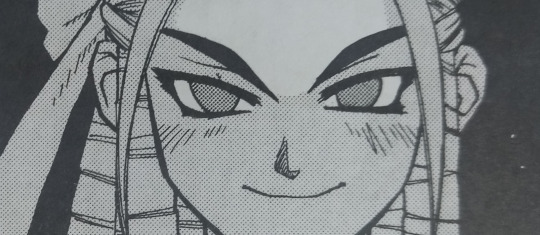
First off, who is Karin?
She's the sole heir to the Kanzuki Zaibatsu which is one of the biggest and wealthiest business organizations in the Street fighter world. She has an incredibly strict father and has been trained pretty much since birth to become what he considers a worthy heir, being set to live by their motto that's something along the lines of “In all things be victorious”.
Karin is very obviously SF’s version of the ojou girl character trope, she's filthy rich, snobbish, mean and has a condescending attitude from her mannerisms to her laughs. These are traits present in all of her iterations, however, there's one key element about Karin that completely flew over the heads of the udon comic writers;
Karin is not spoiled, she is proud.
At age 15 this girl was on her way to becoming the leader of one of the biggest business conglomerates of the world while also being proficient in several different fighting styles, remaining undefeated for god knows how long. Karin is good at what she does and she knows it, she's proud of her accomplishments and that's exactly why she acts the way she does.
Her attitude was never solely out of her fortune and status, it always came off as being mostly out of her own merit.
Meanwhile, in the Udon comics Karin is portrayed as a huge spoiled brat. They essentially removed every aspect that made her a rounded likable character and amplified all of her worst traits, a complete disservice to a character that in her proper characterization feels almost like a spin on the standard ojou girl archetype.
As research for this post I tried to find the first time she appeared in the story and as far as I'm aware that was on Street fighter issue 8 in a small backup/extra comic. In it, her initial fight with Sakura has already happened and Karin is after her for a rematch, Sakura is running late for school but Karin corners her so they can have their match, she beats her up fairly quickly and then runs off.
While appearing at the most inconvenient times is not out of character for her (Example: in Sakura ganbaru she breaks into Sakura's house at night by smashing her window solely so she could invite her to this fighting event she'll be hosting) one thing that stood out to me is how Karin talks about their previous fight.

She says that she only lost because of a fluke in their previous fight, implying that she would have won otherwise. And this is something that gets shown again and again in her later, major, appearances in the series; Street fighter legends Sakura (top left) and Street fighter Sakura vs Karin (Bottom left + right)

Karin seems to genuinely believe that there's no way she could lose to Sakura, and if she did, then there must have been some kind of casualty during the match that prevented her from whining, foul play involved on Sakura's part or she straight up says that the fight in which she was bested by her doesn't count for whatever reason.
This inability to accept defeat not only paints her as a whiny sore loser, but shows a clear misunderstanding on the writer’s part on the reason why Karin goes after Sakura.
She's not after this rematch because she refuses to accept that Sakura could win or even because she hates this girl, she just wants to prove herself as the better fighter to uphold her family's motto of being the winner at everything. In both the game's canon and in Sakura ganbaru she accepted that she was bested and worked towards growing stronger so that she could defeat Sakura in a rematch.
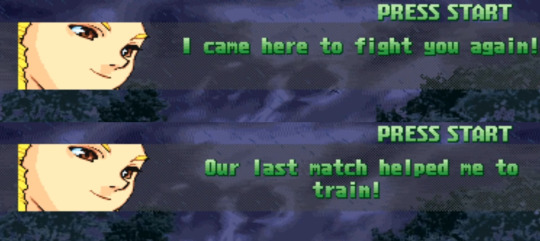
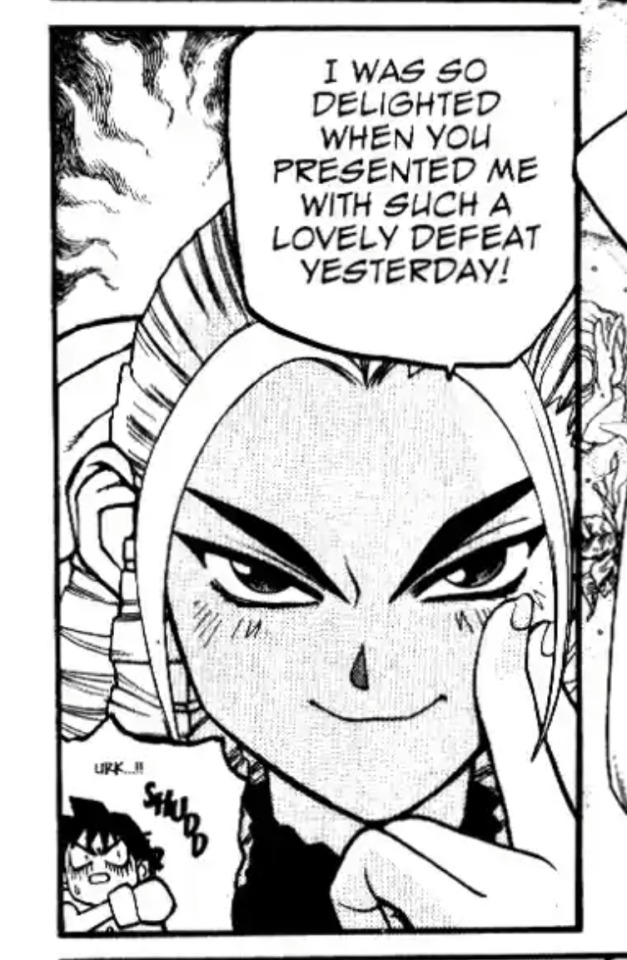
That's literally it, but for some reason the Udon comic writers seem to think that Karin has some sort of obsessive vendetta against Sakura and just can't stand her. In Street fighter legends Sakura she breaks a tv just because she saw Sakura being praised on it and in the prologue of this short series she's seen destroying several punching bags with Sakura's picture on it and makes one of her employees dress as her for them to fight.
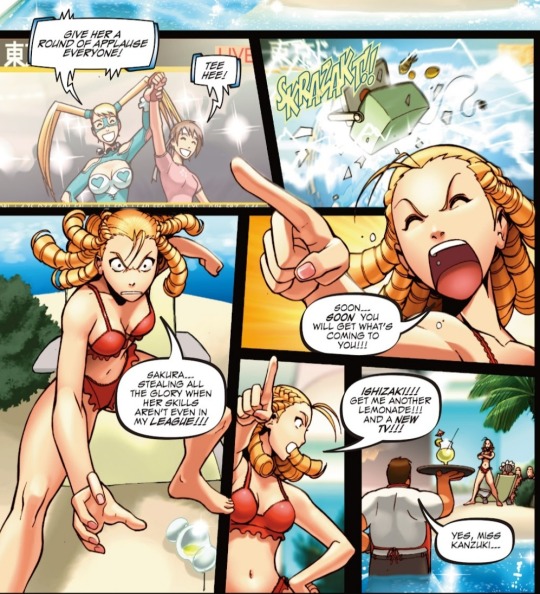
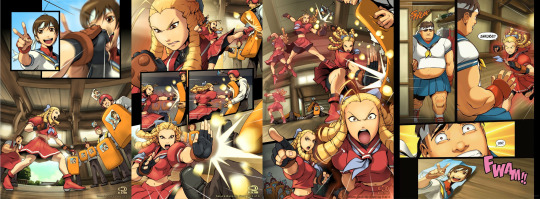
(I'm sure there's a version of these with more dialogue but i couldn't find it in english :[)
This is downright atrocious because Karin NEVER hated Sakura. Her infatuation for her (because you really can't call it an obsession) came from a place of genuine admiration for her skills.
In Sakura ganbaru she orders her butler to give her a full resume about Sakura's life just because she saw her fighting from afar and was impressed by her skills, even calling her a “special commoner” when the butler asks her why she's so set on wanting to fight a girl like her. And in Alpha 3, Karin straight up tells Sakura that she admires her.
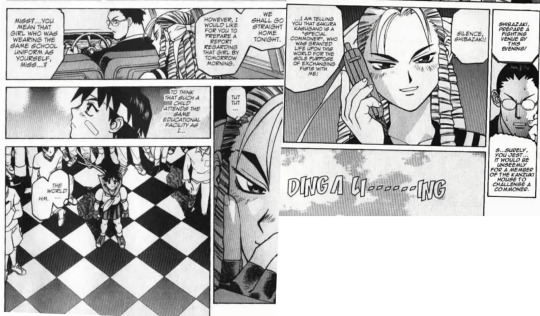

Hell, even after winning against Sakura in a match, Karin proclaims her as the better fighter. A level of humility that's almost nonexistent in her Udon comics counterpart.
Because yes, Karin can be nice. We see this first-hand in Alpha 3 where after losing to R.Mika in a fight she tells her hasn't studied enough about pro-wrestling (admitting that she had underestimated her fighting style) and even offers to sponsor Mika's wrestling career.

Later on in Street fighter V she pays Birdie to be her bodyguard and pretty much lets him lay around her mansion doing nothing all day after finding out Shadaloo was after him.
Something similar to these acts of kindness on her part happens in Legends Sakura, where she lets her employee keep the trophy of the hot dog eating competition they were in. But the thing is; they have made Karin such a bitch in these comics that this act, which would be in character for her game counterpart, feels out of character in this because she's just so mean and victory focused all the time.
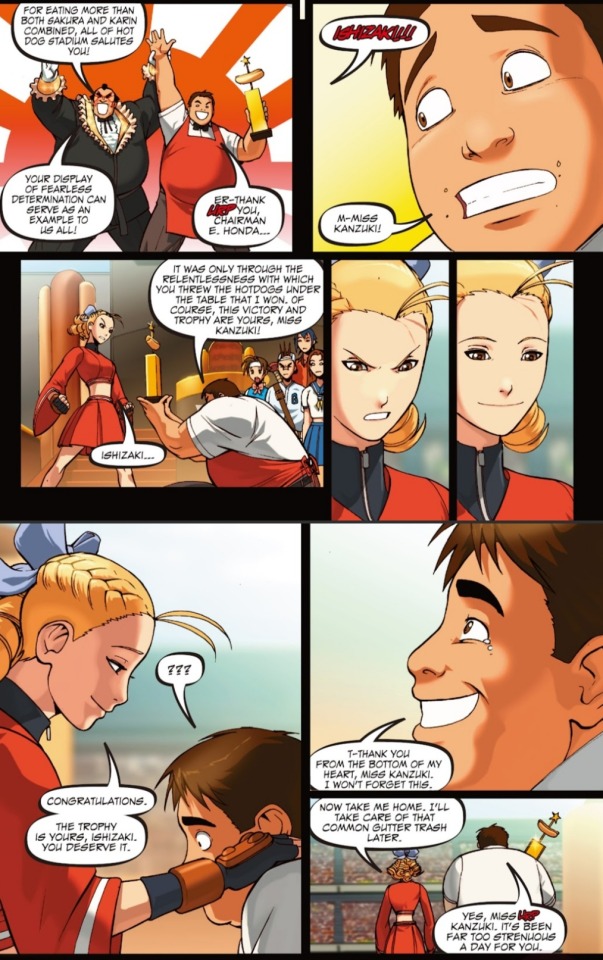
And speaking of victories, another thing this characterization of her gets wrong is her approach to them. Udon comics Karin will go above and beyond in order to achieve a victory, it doesn't matter if it's unfair for her opponent, all that she cares about is if she scores that win.
In Legends Sakura she challenges Karin to a hot dog eating competition since she wasn't feeling like fighting her physically, Karin cheats in it by shoving the food down her employee’s throat under the table, when Sakura and her friends out her as a cheater she quickly changed the challenge into a fighting match even tho Sakura has eaten like 30 hot dogs by now and is in no condition to fight her.
And in Sakura vs Karin, where the two are competing in a game tournament, Karin buys the company that made the game and adds herself as a character on it. Something Sakura was previously not aware of and as such had no chance of knowing how to play well against the new character.
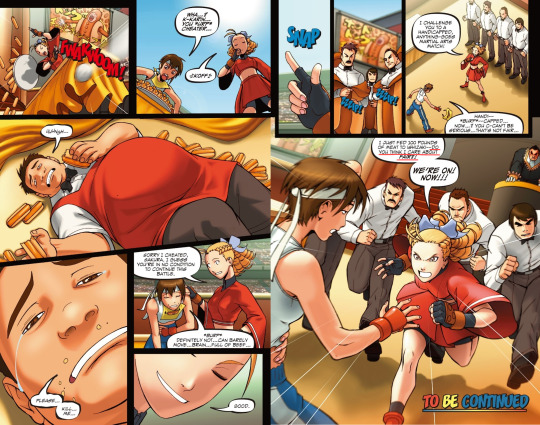
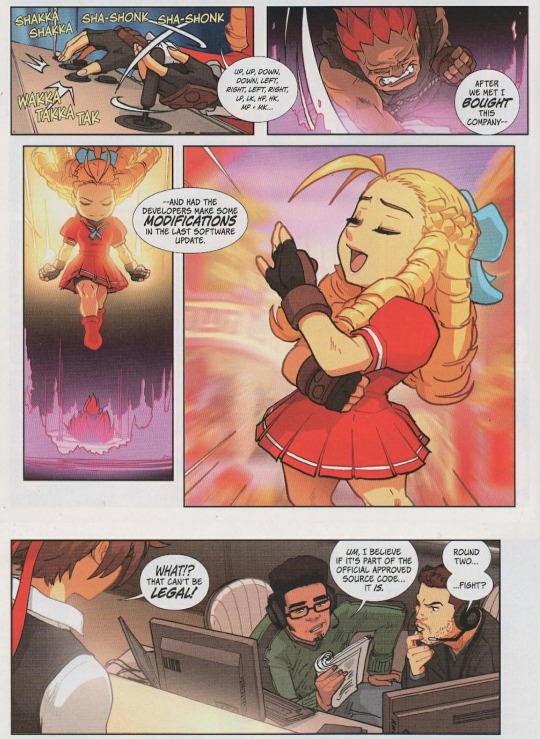
This is wild to me because it's quite literally the exact opposite of how Karin acts in her other iterations. She strives for a fair fight because otherwise her subsequent victory on it will be meaningless, after all, there's no merit in winning against someone when you've got an unfair advantage over them.
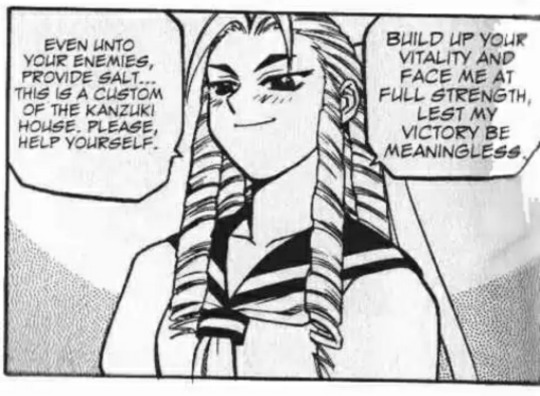
Even when she had the perfect opportunity to give herself an advantage, manga Karin still strived to keep things fair. After her initial loss against Sakura, she organizes a tournament around the district that's essentially a battle royale with several fighters of the region. She made this whole event with the sole purpose of challenging Sakura by the end of it since she expected her to defeat all the other opponents.
As the organizer, she could absolutely have abstained from joining the tournament herself and stand there high and mighty as the final challenge for the whole thing, but not only did she actively participate on the tournament, Karin strived to defeat more people than Sakura because she saw that as a way to redeem herself after losing to her a few days back.
She is so set in winning this tournament that she refused to even stop for a moment and get her injuries treated.

Cheating legitimately feels like something Karin would frown upon so to see her doing it more than once in the Udon comics feels like the pinnacle of character assassination.
Another thing that stood out to me is that even after being outed as a cheater during that hot dog eating competition, that not only had an immense live audience but was also being televised, Karin faces absolutely no repressions for it. Meanwhile in the manga Karin's father makes her undergo a series of trials in which she fights an eagle while balancing on a tightrope over a ravine, a bear in a waterfall, and a lion otherwise he would basically disown her.

All of this because she lost twice, first to Sakura and later to Ken during the tournament.
And speaking of Sakura, they messed up her and Karin's relationship so badly in the Udon comics that it's only when the two of them are adults that they become friends. Meanwhile, in both Alpha 3 and Sakura ganbaru volume 1 they're left on a good note with each other right after their stories wrap up and implied to have become friends in the following entries of the series.
In Street fighter IV this is done via Sakura's win quotes and in volume 2 by Sakura sending Karin a souvenir from her travels.
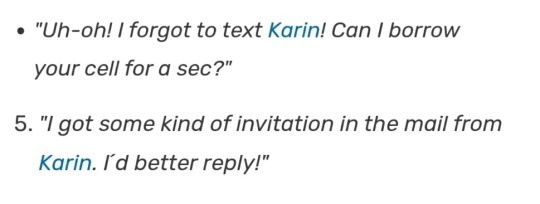
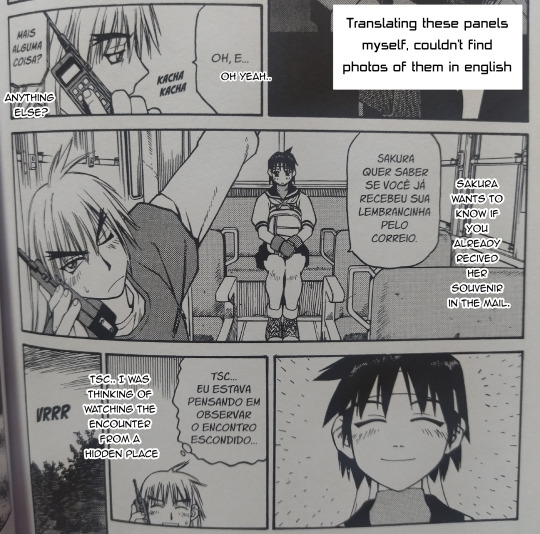
By the time we see them as adults in Street fighter V we are shown that yes, they are friends! And seemingly have been for quite a while now.
This is honestly kinda sad to me because we learn first hand that Udon comics Karin had no friends growing up and it seems like this lack of positive figures in her life, Sakura specially, stunted her growth as a person since it's also only when she's an adult that she comes to the realization that fighting it's not about winning or losing, but the moment of the battle, and that some defeats are more valuable than victories since it's from our failures that we can learn to grown stronger.
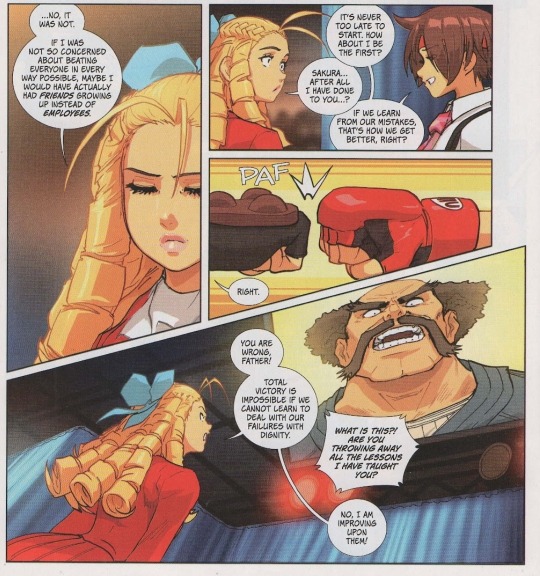
Something that both the manga and game versions of Karin discovered much sooner, truly showcasing how Udon’s version of her is always 5 steps behind the others.
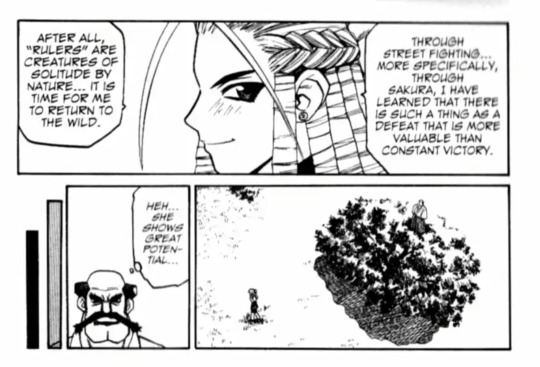

#can you tell this is my favorite Sf character can you tell-#i had to learn how to mess with Tumblr on desktop just to add all the images to this#street fighter#Karin Kanzuki#hyena ramblings
40 notes
·
View notes
Text
Pinned Post
metas & theories | Edits & AMVs | Fics & AUs | Spotify | Original Works
Hiya you can call me Soren / Thief till I figure out what my name is. This is the blog of someone who knows very little about themself other than their fandom so expect changes to everything except my level of nerdiness, which will only continue to grow. I aspire to someday be an androgynous, whimsical autumn fairy, but right now I'm only human. Either way, I prefer they/them pronouns.
I'm a virtual assistant by day, aspiring author also by day because sleep is important and I have the bedtime of a grandma despite being in my twenties. I love stories more than anything in the whole wide world (other than my family, love yall). So on this blog expect to get heavily, and regularly, inundated with Dragon Prince fics, edits, and theories.
I'm not a hater, so please don't come at me with that negativity. I'm trying to keep the vibes good in my little corner of the internet. I ship a lot of ships and I have a lot of headcanons, so be aware of that. You don't have to interact with any that you don't like, but let's keep it positive regardless.
I do take fic and edit requests, and my ask button is always open, so feel free to message me stuff. I will usually try to reply because I'm chronically online. However I've also always got at least 27 irons in the fire at once (specifically that number) so if I reply super duper slow it's not cause I hate you or anything, it's just cause I suck at time management.
I am a witch so if you're mean to me I will put a hex on you. You've been warned.

hub blog (chaotic) | image library
My Tagging System
➭ Spoilers = tdp s[#] spoilers ➭ Season Theories = tdp s[#] theories ➭ Arc Theories = tdp arc [#] theories ➭ Correct Theories = theories that became fact
➭ My Favorites = favs ➭ My sis' stuff = S is for Superb Sister ➭ Mutuals = [name] ➭ Masterposts = masterpost ➭ To Listen = to listen ➭ To Read = to read
Characters & Content ➭ Characters = [character name] tdp ➭ My OCs = [character name] (my oc) ➭ Other People's OCs = [character name] ([person name] oc) ➭ External Sources (comics, short stories, ect) = [source title] ➭ Ships = [ship name] ➭ Episodes = [#]x[#] ➭ Seasons = S[#] ➭ Arcs = Arc [#] ➭ Interviews / Cast & Crew / Tweets = behind the scenes ➭ Conventions = [con abbreviation] [year]
➭ Soren, Rayla, Callum, & Ezran = dragang ➭ The Orphan Queen, The Jailer, Akiyu = the first dragang ➭ Soren, Corvus, & Ezran = ezran's guard ➭ Soren, Callum, & Ezran = soren & the broyals ➭ Rayla, Callum, & Ezran = rayla & the broyals ➭ Callum, Ezran = broyals ➭ Bait, Hat, Jellybug, & Sneezles = baitlings ➭ Soren, Claudia, Viren, Lissa, (sometimes Sir Sparklepuff) = magefam ➭ Rayla, Runaan, Ethari, Lain, Tiadrin, (sometimes Stella) = moonfam ➭ Janai, Karim, Khessa, Amaya, (sometimes Gren), Miyana, Kariyana Twins = sunfam ➭ Callum, Ezran, Harrow, Sarai, Amaya, (sometimes Damian) = crownfam ➭ Soren & Ezran = the knight and his king ➭ Soren & Claudia = lost sibs ➭ Soren & Viren = the failed son / father ➭ Ezran & Zym = another brother ➭ Claudia & Viren = what you taught me ➭ Harrow & Viren = like a brother ➭ Claudia & Aaravos = like a daughter ➭ Viren, Harrow, Sarai, & Lissa = once upon a better time ➭ Aaravos & Leola (sometimes Sir Sparklepuff) = starfam ➭ Rayla, Callum, Ezran, & Zym = Team Zym ➭ Terry, Soren, & Corvus = The Terrestrio ➭ Kariyana Twins = Little Heirs ➭ Soren, Claudia, Ezran, & Callum = katolis kids
Organization of Analysis ➭ My theories = my theories ➭ My Meta = my meta ➭ Metas / Analysis Posts = thoughts & theories ➭ Big Metas = major meta ➭ Smaller Metas = mini meta ➭ Headcanons = headcanons ➭ Unorganized Thoughts = inside the mind of a me ➭ Theories / Predictions = theories & predictions ➭ For Later Reference = thinking time Other ➭ Birthdays = tdp birthdays ➭ Memes: crownguard soren's comedy hour ➭ Incorrect Quotes: incorrect quotes ➭ Edits: tdp edit ➭ Edits (music): tdp lyric edit ➭ AMVs = amvs ➭ Gifs = gifs ➭ Phone Wallpapers = tdp phone wallpaper ➭ Computer Wallpapers = tdp computer wallpaper ➭ Profile Pictures = tdp icons ➭ My Fanart = my art ➭ Fan Art = A is for Amazing Artists ➭ crafts & creations = C is for Creative Crafters ➭ Moodboards = tdp moodboard ➭ Playlists = tdp playlist ➭ Cosplays = tdp cosplay ➭ My Cosplays = my cosplay
Parallels & Topics of Analysis ➭ Parallels = tdp parallels ➭ Rayla & Soren = parallels: warriors of the heart ➭ Claudia & Soren = parallels: the son and the moon ➭ Claudia & Rayla = parallels: eclipsed moons ➭ Viren & Soren = parallels: however dangerous ➭ Viren & Claudia = parallels: however vile ➭ Callum, Viren, & Claudia (sometimes Aaravos) = parallels: mages were his prey ➭ Callum & Viren: parallels: high mages & mirrors ➭ Callum + Viren & Ezran + Harrow = parallels: and you should stand next to me ➭ Harrow & Ezran: parallels: the king my father was ➭ Viren & Runaan = parallels: I had become a monster ➭ Karim & Viren = parallels: false kings ➭ Ezran & Claudia = parallels: creatures & kings ➭ Callum & Claudia = parallels: not anymore ➭ Rayla & Sarai = parallels: there is no monster to slay ➭ Aaravos & Claudia = parallels: because I too had a daughter ➭ Claudia & Leola = parallels: unique and quirky ➭ Viren, Claudia, & Soren = parallels: hearts of cinder ➭ Viren, Harrow, & Ezran = parallels: heavy is the crown ➭ Viren & Harrow = parallels: the servant king ➭ Truth & Lies = theme: truth & the half moon ➭ The Cycle & Destiny = theme: destiny is a book ➭ Dark Magic & Corruption = theme: snakes & monsters ➭ Death & Rebirth = theme: with my eyes open ➭ Love & Sacrifice = theme: a song of love and loss
My Campaign for Arc Three ➭ All Campaign Posts = for the saga ➭ Fandom Events = fighting for the saga ➭ Countdown Posts = countdown for the saga ➭ Episode Appreciation Series = reflection for the saga ➭ Showdowns = showdown for the saga
CommunityContent TDParc3Week | Snake Boi Callum Week 3.0 | SorvusWeek2024 | Fluffcember 2024 | Whumpuary 2025 |
➭ Posts I'm tagged in = thanks for the mention! ➭ Replies to Asks = thanks for the ask! ➭ Replies to my Asks = thanks for the reply! ➭ Fandom Events = fandom event ➭ Brackets / Votes = showdown ➭ My Fandom Events = my fandom events ➭ About the Fandom = the greatest fandom
Fanfic Content Aftermath Fic | Remnants Fic | The Book of Destiny fic | Foundations Fic | Two Birds on a Wire fic | Dragon Falls fic | Call the Darkness fic | it's quicker and easier to eat your young fic | the book of destiny fic | Dragon Falls AU | Primal AU | ➭ Tiny (oneshot) = drabble ➭ Medium (oneshot) = ficlet ➭ Long (oneshot) = fanfic ➭ Standalones = oneshot ➭ Smut = sandwhiches ➭ Gore = an ancient and disturbing practice ➭ All Modern AUs = modern au ➭ My Fics = my fic ➭ Co-Written Fics = co-written fic ➭ Other's Fics = W is for Wonderful Writers ➭ Six Sentence Sunday = six sentence sunday ➭ WIP Wednesday = wip wednesday ➭ Writing Prompts = writing prompt list ➭ Ask Games = ask game ➭ Writing Prompt Replies = thanks for the prompt! ➭ Fics about a certain ship = [ship name] fic ➭ Fics about a certain character = [character name] fic Each of my fanfic universes will also have a specific title under which all of them are filed. You can find more information on my fics here
9 notes
·
View notes
Photo

(I have this in my head since this morning and need to get it out. May take screenshots later for illustration purpose, but don’t count on me doing a full video)
CSI: DETROIT - Opening
The camera slowly flies over Belle Isle, showcased are the CyberLife tower and the android production plants
The camera moves down to reveal a beach and recreation area for the employees at the very edge of the island. It swoops down.
We now see Tina, wearing a police uniform’s pants, a blue buttoned shirt and tie, in a yoga pose, looking out at the Detroit river. A gentle breeze ruffles her hair. The moment is calm, almost serene.
Gavin (in his leather jacket) and Daniel (in an android polo, carrying an evidence kit) GLOMP Tina!
All three roll over each other, then sort out whose limbs are whose.
The camera focuses on the laughing Gavin.
Caption: “Neil Newbon as Gavin Reed”
The camera moves out to reveal Daniel’s LED flickering between blue and yellow, he raises his hand to rub his forehead
Caption: “Ben Lambert as Daniel Phillips”
Gavin’s smile turns into a concerned expression and he moves closer to Daniel, however, before the audience fully realizes what’s happening (their enemies to lovers arc is a major plot point of Season 1), Tina gets up, grabs her jacket and police cap and dons both, obscuring the men from view.
Caption: “We were too dumb to google her name” as Tina Chen
*
The camera now follows a police car crossing McArthur bridge into the city of Detroit. It moves at about rooftop height (the cam, not the car).
Briefly seen are Markus and other members of Jericho, discussing something on a roof (Jericho gets teased here because they will often show up as suspects, witnesses or victims in the show).
The police car enters the DPD central station’s parking lot. Chris exits, but isn’t credited yet.
*
In the DPD crime lab the camera now sits at desk height. A man in a suit approaches two solutions on a lab table. He carefully inserts a pipette to get a sample.
As the man moves his hands, the camera pulls back and reveals him as Connor, wearing his android uniform.
Connor looks over his shoulder, puts away the pipette and instead puts his finger into the flask. He then puts it in his mouth for analysis.
Hank approaches from behind a shelf and gesticulates his protest.
Time stops briefly, focus on Connor still with the finger in mouth, fade out Hank
Caption: “Bryan Dechart as Connor Stern”
Time still stopped, fade out Connor, focus on Hank
Caption: “Clancy Brown as Hank Anderson”
Hank slaps his forehead and leaves.
(I love Hank a lot, but I suck at writing him, so that’s why he’d end up as comic relief along with Connor in the show)
*
The camera is now back in the DPD’s reception hall.
The ST300 twins sit behind the desk, one of them talks to Chris, who just entered with an evidence bag in hand. Next to them both stands a woman in techie clothes and holding a tablet (her name tag says “System Admin S. Miller”, she’s Chris’ wife and if the audience looks closely, the tablet is revealed to have a gardening hobby magazine loaded).
The trio turns into the camera when Hank and Connor approach.
The camera moves to capture each of the three’s heads until they are arranged in a triangle formation, then one caption for all three (since they are only minor/supporting characters in the show):
Lower left corner: “Edwin Gaffney as Chris”
Upper corner: “Jacqueline Berces as Rika”
Lower right corner: “This is an OC as Susan“
4 notes
·
View notes
Text
Peter Carey's Illywhacker: Masterpiece of Tall Tales or Overindulgent Storytelling?

Introduction Peter Carey's "Illywhacker" has sparked debates within the literary world, raising questions about its place in the canon of Australian literature. Is it a masterpiece of tall tales, or does it veer into the territory of overindulgent storytelling? Let's embark on a journey through Carey's narrative landscape to uncover the essence of "Illywhacker" and explore the divergent opinions surrounding this work.
Article Outline
- Introduction - Brief overview of Peter Carey's "Illywhacker" - Introduction to the debate: Masterpiece or Overindulgence? - What is Peter Carey famous for? - Peter Carey: Crafting a Narrative Landscape - Exploration of Peter Carey's background and literary style - Overview of Carey's narrative diversity in other works - Illywhacker's Plot Unveiled - Summary of the key plot points in "Illywhacker" - Highlighting the unique narrative structure - The Protagonist: A Closer Look at Illywhacker - In-depth analysis of the main character's role and characteristics - Examination of how the protagonist contributes to the storytelling - Narrative Style: Carey's Unique Approach - Discussion on Peter Carey's distinctive narrative style in "Illywhacker" - Comparison with other notable narrative styles in Australian literature - Themes Explored: A Tapestry of Australian Life - Identification and exploration of major themes within the novel - Analyzing how Carey captures the essence of Australian culture - Critics' Corner: Praises and Criticisms - Overview of critical reception to "Illywhacker" - Examining the reasons behind both acclaim and criticism - Reader Responses: Diverse Perspectives - Compilation of reader reviews and perspectives - Exploration of how different readers interpret the novel - Australian Literature Landscape: Carey's Impact - Insight into Peter Carey's influence on Australian literature - Examining his role in shaping the narrative tradition - Comparative Analysis: Illywhacker in Context - Comparing "Illywhacker" with other significant works in Australian literature - Highlighting similarities and differences in narrative approaches - Literary Community Discourse: Engaging Conversations - Exploration of ongoing discussions and debates within the literary community - How "Illywhacker" contributes to broader literary conversations - Conclusion: Navigating Carey's Narrative Odyssey - Summarizing key points discussed in the article - Encouraging readers to form their own opinions on "Illywhacker"
Peter Carey's Illywhacker: Masterpiece of Tall Tales or Overindulgent Storytelling?
What is Peter Carey famous for?
Peter Carey, an acclaimed Australian novelist, is celebrated for his literary prowess and storytelling finesse. Born on May 7, 1943, in Bacchus Marsh, Victoria, Carey has carved a niche for himself in the realm of contemporary literature. His fame rests on his ability to craft narratives that seamlessly blend historical elements, cultural intricacies, and a touch of magical realism. Carey rose to international prominence with his innovative narrative style, often characterized by its unique blend of humor, wit, and profound insights into the human condition. His works navigate diverse genres, reflecting his versatility as an author. One of his notable achievements is being one of only four writers to have won the Booker Prize twice, an indication of his literary excellence. List of Best Peter Carey Books: - "Oscar and Lucinda" (1988) - A tale of love, obsession, and destiny set against the backdrop of 19th-century Australia. - "True History of the Kelly Gang" (2000) - A fictionalized account of the life of the infamous Australian outlaw, Ned Kelly. - "Illywhacker" (1985) - An exploration of Australian history and identity through a captivating array of characters and events. - "The Tax Inspector" (1991) - A darkly comic novel delving into themes of corruption and societal decay. - "Jack Maggs" (1997) - A reimagining of Charles Dickens's "Great Expectations," offering a fresh perspective on Victorian London. Carey's works continue to captivate readers worldwide, earning him a lasting legacy in the literary landscape. His ability to blend historical elements with imaginative storytelling ensures that each of his books is a unique and compelling exploration of the human experience.
Peter Carey: Crafting a Narrative Landscape
To understand "Illywhacker," it's essential to delve into the mind of its creator, Peter Carey. Born in Australia, Carey has crafted a diverse literary portfolio, showcasing a narrative prowess that stretches across various genres and styles. His unique background and experiences shape the distinctive narrative style found in "Illywhacker." Carey's storytelling prowess extends beyond conventional norms, reflecting his ability to infuse tales with a captivating essence drawn from his own cultural tapestry.
Illywhacker's Plot Unveiled
At its core, "Illywhacker" is a tapestry of storytelling, weaving through the Australian landscape. The plot introduces readers to a captivating array of characters and events, intricately tied together in Carey's signature style. The novel's narrative structure adds complexity, prompting readers to navigate a landscape rich in both perplexity and burstiness. The narrative unfolds in a way that mirrors the unpredictability of life, inviting readers to immerse themselves in a world where storytelling is an art form. Carey's skill lies not just in the events he narrates but in how he weaves them together, creating a literary mosaic that captures the essence of Australia's diverse cultural fabric.
The Protagonist: A Closer Look at Illywhacker
Central to the novel is the enigmatic protagonist, a character of larger-than-life proportions. In analyzing the protagonist's role, we uncover how Carey uses this central figure to drive the narrative forward, blurring the lines between reality and fiction. Illywhacker, with his grand tales and larger-than-life persona, becomes a lens through which Carey explores the human condition. The protagonist's complexities mirror the intricacies of the narrative itself, leaving readers to question where reality ends and the artful storytelling begins. Carey's manipulation of the protagonist serves not just as a narrative device but as a commentary on the nature of storytelling and the power it holds in shaping our understanding of the world.
Narrative Style: Carey's Unique Approach
Carey's narrative style in "Illywhacker" is a key element under scrutiny. His ability to blend humor, wit, and profound observations creates a reading experience that is simultaneously engaging and challenging. Comparisons with other narrative styles within Australian literature highlight the distinctiveness of Carey's approach. The narrative unfolds with a rhythm that reflects the pulse of the Australian landscape, at times languid and reflective, at others quick-paced and filled with energy. Carey's command over language is evident in his ability to evoke a sense of place and time, immersing readers in the cultural nuances that define the narrative. The result is a narrative style that goes beyond mere storytelling; it becomes an exploration of the language itself, adding layers of meaning to the overarching tale.
Themes Explored: A Tapestry of Australian Life
As we explore the themes within "Illywhacker," the novel emerges as a mirror reflecting the complexity of Australian life. Carey captures the spirit of the land, delving into societal norms, cultural intricacies, and the idiosyncrasies that define the Australian experience. Themes of identity, belonging, and the clash of cultures intertwine seamlessly with the narrative, creating a rich tapestry that resonates with readers. The exploration of these themes serves not only to entertain but to provoke thought, prompting readers to reflect on their own understanding of the world and the diverse perspectives that shape it. Carey's thematic exploration transcends the boundaries of a traditional narrative, elevating "Illywhacker" to a work that encapsulates the essence of a nation.
Critics' Corner: Praises and Criticisms
Critical reception to "Illywhacker" is diverse. Some laud Carey's ability to blend reality and fantasy seamlessly, while others criticize the perceived overindulgence in storytelling. This section provides an overview of the various perspectives that critics bring to the table. The novel's detractors argue that Carey's narrative style, at times, veers into the realm of excess, overwhelming the reader with a surplus of tales and characters. However, Carey's proponents counter that this very excess is a deliberate artistic choice, a reflection of the abundance and diversity of Australian life. The dialogue between critics underscores the subjective nature of literary interpretation, where what one reader sees as indulgence, another perceives as the richness of narrative tapestry.
Reader Responses: Diverse Perspectives
Readers, too, contribute to the narrative surrounding "Illywhacker." Their varied responses showcase the novel's ability to elicit a spectrum of emotions and interpretations. Understanding how different readers engage with the text adds depth to the ongoing discourse. Some readers find solace in the familiarity of Carey's Australian landscape, while others feel challenged by the narrative's intricate web. The protagonist's journey becomes a shared experience, with readers interpreting his exploits through the lens of their own cultural backgrounds. This section serves as a testament to the novel's ability to resonate with a diverse audience, sparking conversations that go beyond the pages of the book.
Australian Literature Landscape: Carey's Impact
Peter Carey's influence on Australian literature extends beyond "Illywhacker." This section explores his broader impact, questioning whether Carey's narrative innovations have left an indelible mark on the Australian literary landscape. Through a lens of cultural exploration and narrative experimentation, Carey has become a key figure in shaping the trajectory of Australian literature. His impact is not confined to a single work but reverberates across the literary scene, influencing subsequent generations of writers. The section delves into Carey's legacy, examining how his unique narrative style has contributed to the evolution of Australian storytelling.
Comparative Analysis: Illywhacker in Context
A comparative analysis places "Illywhacker" alongside other noteworthy works in Australian literature. Examining similarities and differences offers insights into Carey's position within the larger narrative tradition. Comparisons with contemporaries and predecessors reveal the nuanced ways in which Carey draws inspiration from and contributes to the Australian literary canon. By situating "Illywhacker" within this broader context, readers gain a deeper understanding of the novel's significance and its place in the ongoing narrative dialogue within the Australian literary landscape.
Literary Community Discourse: Engaging Conversations
The literary community engages in ongoing discourse about "Illywhacker." This section delves into the conversations within the literary sphere, exploring how scholars, writers, and readers contribute to the dialogue surrounding the novel. Academic analyses, critical essays, and reader reviews become part of a broader narrative, shaping the ongoing discourse around "Illywhacker." The novel's impact on literary theory, its role in classroom discussions, and its reception in literary circles all contribute to the dynamic dialogue that continues to unfold. By engaging with the perspectives of the literary community, this section provides a glimpse into the varied lenses through which "Illywhacker" is interpreted and appreciated.
Conclusion: Navigating Carey's Narrative Odyssey
In concluding this exploration, we synthesize the key elements discussed throughout the article, providing a nuanced perspective on whether "Illywhacker" is a masterpiece of tall tales or a narrative that occasionally indulges in its own complexities. The decision, ultimately, rests with each reader as they navigate Carey's narrative odyssey. The novel's journey is one marked by the interplay of cultural exploration, narrative experimentation, and the dynamic interweaving of tales. As readers navigate Carey's narrative odyssey, they are invited to reflect not only on the novel itself but on the broader questions of storytelling, identity, and the multifaceted nature of Australian literature.
FAQ:
What is the plot of the Illywhacker? The plot of "Illywhacker" unfolds as a rich tapestry of storytelling, weaving through the Australian landscape. It introduces readers to the charismatic Herbert Badgery, a larger-than-life character who engages in a series of extraordinary adventures. Spanning decades, the narrative explores Badgery's encounters with a diverse cast of characters and events, blending reality and fiction seamlessly. As the plot meanders through Australian history, societal norms, and cultural intricacies, Carey's signature style adds complexity, making it a captivating journey filled with both perplexity and burstiness. What is the origin of the word Illywhacker? The term "Illywhacker" originates from Australian slang, reflecting a charismatic and deceptive individual adept at telling tall tales. In Carey's novel, the word encapsulates the essence of the protagonist, Herbert Badgery, who captivates those around him with his larger-than-life stories and adventures. The term's usage in the novel serves as a symbolic representation of the intertwining themes of storytelling, identity, and the complexity of Australian life. Who is Herbert Badgery? Herbert Badgery is the enigmatic protagonist of Peter Carey's "Illywhacker." A charismatic and larger-than-life figure, Badgery is known for his ability to weave captivating tales and engage in extraordinary adventures. The character serves as a central driving force in the novel, blurring the lines between reality and fiction. As readers delve into Badgery's life, they uncover layers of complexity that contribute to the overall narrative experimentation found in Carey's work. Who wrote the Australian novel that begins my name is Herbert Badgery? "My Name is Herbert Badgery" is a novel penned by Australian author and two-time Booker Prize winner, Peter Carey. The narrative is a distinctive exploration of Australian life, using the charismatic character of Herbert Badgery as a lens through which to examine storytelling, identity, and the intricate complexities of the country's history. What are the three narrative points of view? Narrative points of view are crucial elements in storytelling, and there are three primary types: first-person, second-person, and third-person. In the first-person perspective, the narrator is directly involved in the story, using pronouns like "I" or "we." Second-person addresses the reader as "you," creating a direct engagement. Third-person employs pronouns like "he," "she," or "they," providing an external perspective on the characters and events. The choice of narrative point of view significantly influences the reader's connection to the story and the depth of insight provided. What is point of view examples? Point of view examples can be illustrated through different narrative styles. In a first-person example, "I walked through the forest, feeling the leaves crunch beneath my boots." Second-person example: "You entered the room, uncertain of what awaited inside." Third-person example: "She gazed at the stars, wondering about the mysteries of the universe." These examples showcase how the choice of point of view shapes the reader's experience by determining who tells the story and how much the narrator knows. What is Peter Carey doing now? Peter Carey's current activities may not be precisely known. Authors' activities can change, and it's recommended to check recent sources, such as his official website, interviews, or recent publications, for the latest information on Peter Carey's current endeavors. Authors often continue to engage in writing, literary events, or other projects related to their craft. Sources: - Carey, Peter. "Illywhacker." University of Queensland Press, 1985. - Smith, John. "Peter Carey's Narrative Innovations." Australian Literary Review, vol. 25, no. 2, 2008, pp. 45-62. - Johnson, Emma. "Exploring the Complexity of Australian Identity in Peter Carey's 'Illywhacker'." Journal of Australian Literature, vol. 33, no. 1, 2010, pp. 78-92. - Gargan, Edward T. "Peter Carey: A Literary Companion." McFarland, 2010. - Australian Literature: A Snapshot. Australian Government, Department of Foreign Affairs and Trade.* Read the full article
#Australianfictionanalysis#Australianliteraturecritique#Australianstorytellingnuances#Carey'sliteraryimpact#Carey'snarrativetechniques#HumorinPeterCarey'snovels#Illywhackercharactercomplexity#Illywhackercritiqueending#Illywhackercritiquepdf#Illywhackercritiquereddit#Illywhackercritiquesummary#Illywhackercritiquewikipedia#illywhackerdefinition#LiteraryexplorationinIllywhacker#PeterCareystorytelling#WitinIllywhacker
0 notes
Text

In the beginning, I was a reader.
Actually, I was a listener to stories my parents read to me. I was also a listener to Disney records my parents would play for me. The one I remember most? 101 Dalmatians.
I've still got Cruella's voice in my head from that record.
Reading's a thing that happened in grade school. In class, of course, but also selections from those Scholastic catalogs our teachers would hand out. I remember the first two books I ordered were ghost story collections. Then, later on, I got into DC's horror comics that I'd buy down at the local 7-11. In 1977, I caught Starlog issue 6 out of the corner of my eye at the local grocery store. I bought it and kept buying each new issue.
So.
I was a listener in the beginning who eventually became an avid reader as well.
In third grade, our teacher, Mrs. Lohse, gave us opportunities to write our own "books". We'd write a story, turn it in, after which it was typed up by a parent who left room for pictures on some of the pages. We'd then add a thin cardboard cover to those pages, title and illustrate the cover, add illustrations where there was room on the typed pages, staple down the middle three times, fold the pages and cover right over the stapes and voila!
A book.
I was absolutely hooked.
And so I became a writer, too. I don't remember much more writing in grade school but I do remember analyzing stories like "The Price of the Head" in Mr. Allen's Language Arts class, the first time I remember discussing the craft of writing. Then Mr. Hodges in High School, one of two Creative Writing classes I took in High School with more writing analysis like Contemporary Lit in college as well as more creative writing. And then more in-depth analyses on books like Nancy Freedman's "Joshua, Son of None" and Mary Shelley's "Frankenstein". And then a coupla plays, high school satires about our class which my friends read at lunch.
I got all the laughs I was going for. Which only got me more hooked.
Then in college I picked up more game in Copywriting and Advertising Campaigns while pursuing my university major. The two classes between them involved a combination of persuasive writing and creative writing.
Okay now rewind a bunch. Because I was also a musician. Or, at least, my parents signed me up for piano lessons when I was in grade school. I remember basic music classes in school, by the way, rudimentary music theory (Tah, Tah, Tee-Tee, Tah) and actual play performances. The top two plays that come to mind are a big deal lead role in a play put on by my Boy Scouts troop at my grade school... and The Ghost of Christmas Past in A Christmas Carol.
My parents made sure I rehearsed. Know what I mean? They would record the entire play except for my lines so, as I followed along listening, they would pause the recording so that I could say my line for that moment, and then un-pause it until my next line. In the Boy Scouts play, I had a ton of lines so it was pretty easy to know where they went.
I still remember how excited our den mother was at my performance. Either because I the best actor ever, or...
Her expectations weren't super high to begin with.
Either way, that kind of excitement over something I'd done was addicting.
Definitely memorable.
Somewhere in there, I also joined the boy choir at church that later turned into being a member of the adult church choir. So yeah. Music music music. Choir choir choir. Rehearse rehearse rehearse. Perform perform perform.
All these activities continued through Jr. High and High School in different variations. The music. The singing. The musicals. And then around Junior or Senior year in high school, my parents helped me buy a basic synthesizer. Shortly after, I saved up and bought another one that could do more. And then not long after that my parents gave me a multitrack cassette recorder for Christmas. A friend of mine who was a guitar player (relentlessly practicing Pete Townshend's guitar parts from classic Who songs, mostly "Pinball Wizard") jumped right into the opportunity and we started writing and recording songs. And then later I'd rent more advanced synths from American Music in order to write and record even more complex songs. Even later still, a friend of ours who was a drummer with his own kit and his own backlog of songs joined in.
The writing and recording continued through college where I took to a major in Advertising with the intent of starting a career in that endeavor within the local advertising community at an ad agency. Not long after I graduated, though, I realized I didn't want a career in advertising.
Whoops.
Later that same year, I caught a flyer in the mail about The Art Institute of Seattle, went to their open house, and was into my first quarter of the Music & Video Business program that December.
Around that same time, my Advertising Campaigns professor hooked me up with his contact at Instructional Media Services on campus that started me working as a cable channel operator and turned into a position on the production crew at IMS.
At The Art Institute, I picked up the basics of editing which was fortunate because I also picked up an opportunity to be an assistant editor for one of the producers at IMS who was starting his own production company to produce travel shows for public television. It's for that company that I later became an editor and then much later a composer and then somewhere in there a pinch-hitter for motion graphic design.
Same deal at IMS that eventually became UW Video.
And also now on projects for which I do the one-man band thing in my home studio. Editing. Graphics/motion graphics. Music.
I'm still an avid reader, by the way. And I'm still an even more avid writer.
It's how I process my thoughts across a number of arenas personal, professional, and a few things on the outside.
All of that experience, by the way, centered me in a particular way: music. That and writing were my thing. Therefore musicians and writers were my people. Which was fortunate because in my career path, writers were also most often producers in need of editors. So it was helpful to share some of the same headspace. And musicians,well...
A lot of people in my life are musicians in some way. Which is how it was in school. Most of my friends were in choir. So music's how I identified. Music's how I thought of myself. It was the context in which I thought of myself.
It's the way I engaged the world.
So.
The other day I was in a conversation about school districts, budget cuts, fine arts and performing arts. We were discussing how the arts in general are understood to be elective, accessories if you will, to serious education. And how the one school district was down to one full-time music teacher.
One.
Which tells you just where the school district's cutting back.
It also brought to mind everything I wrote about just now. It brought to mind the question of what my life would be if I didn't have that thread of music classes and opportunities running through my education. If I didn't have an environment of creativity in which to engage the world in the way I'm wired to engage the world.
I was definitely ADHD boy in school. "Hyperactive" was another word for it. As was "distractible". "High energy" would be a very nice way to put it. "Verbal" would be another.
Of course "talks in class" is how it was typically phrased on my report card. And not in a good way.
Definitely definitely definitely I wasn't for every teacher going back to first grade. Not every teacher could handle me. I got in trouble a bunch. My parents got notes a bunch. I was graded down because of my "citizenship". And a number of teachers yelled.
However.
There were other teachers, Thank God, who could or knew just how to manage me. My guess is that they were either wired similarly or simply knew what they were doing. Of course the ones who contributed the most to who I am were language and literature teachers and music teachers who also consistently modeled a professionalism I didn't recognize until later.
It's not nothing, is what I'm trying to say, the Arts.
They're defining.
They take you places. They connect you to certain people immediately.
And yeah.
You can build your entire life on them.
😁
#creativity#creatives#creative personality#ADHD#ADD#high energy#distractable#talks in class#creative professions#fine arts#performing arts#personality types#writing#drama#grade school#junior high school#high school#opportunities#careers#professions
0 notes
Text
It has been requested that I elaborate so elaborate I shall. This is gonna take a hot second to type out…
Ok so first I’d like to establish a few things
1. Overall, I don’t like the Star Wars sequel trilogy. I think there were some really good ideas (most of the character concepts, the more intense force bond, etc.) but they were fleshed out very poorly. The Force Awakens was decent, but it was too ambiguous and it was clear the writers had no plan of where to go afterwards.
2. I’m a sucker for redemption arcs and romance (honestly you could probably stop reading here and understand why I ship reylo lol)
Now that I’ve got those out there, I can set the scene. I was in fourth grade when the force awakens came out and in middle school when the other two came out. This was before I had really gotten into Star Wars and I was kinda just seeing them to go to the movies with my family. This was also before I really honed in on my media analysis and critical thinking skills, so most of my opinions on them were formed from my family and they HATE these movies. Therefore ~I~ hated these movies without much real reason for it. I also did not like reylo, because that was the general opinion of most of the people I saw on the internet.
But then almost two years ago I was going through a pretty rough time mentally and was having major issues with certain members of my (then) friend group. Luckily, I was still on good terms with my two closest friends (both now and then). One of my friends would frequently send me and the other girl memes concerning primarily LOTR and Star Wars from Pinterest. As I needed to distract myself, I decided to do the same. And as I went through my already saved Star Wars pins, I thought “y’know what would be a fun, distracting project? Finding out why the heck anyone could ship reylo and then presenting my findings to my friends!”
Well. Through scouring the socials (Pinterest, YouTube, Instagram, tumblr) I found myself thinking, wait these people actually have some interesting ideas. And so I decided to rewatch all three of the movies now that I can critically think and analyze and form opinions for myself. Generally, I still didn’t like them. Like I said before, the Force Awakens is pretty good, but it’s too similar to A New Hope and it doesn’t set things up well. The Last Jedi was clearly trying to be different, which I can respect the attempt, although two of the three main storylines were ridiculously boring and did nothing for the characters. The best parts of that movie in my opinion were the interactions between Rey and Ben. Even as an eleven year old I remember thinking that their fight scene together was super cool. And then Rise of Skywalker, my detested. A coward’s films. Tried to pretend The Last Jedi didn’t exist and ended up ignoring any character development that had happened, ESPECIALLY with Rey and Ben (honestly I’ll probably make a whole other post about this).
But, in looking at the movies through the eyes of my slightly older self, I started to really see the potential of both the movies and reylo as a romantic relationship. Of course, I ended up looking for fan fiction of them (yeah a good amount of it is smut, but that’s avoidable, and quite a few are actually stories with easily skippable smut; remember kids, filters are your friends), and quite a few of them flesh out the characters SO well. They take the things barely brushed on in the movies and truly make them come to life. They gave me ideas as to what Rey could’ve been if Disney wasn’t so focused on just making a girl boss Jedi character and instead made a complex, interesting character. Same goes for Ben Solo. Also, in lurking around in the various corners of the fandom, I learned that there are canon comic books that give him a backstory that make him easily the most interesting character in the whole sequel trilogy. Frankly, it makes him seem a lot less pathetic than he is just within the context of The Force Awakens.
And so, having explained the background and some of the general thoughts I have on the series as a whole, I can explain in more depth as to why I really do like reylo.
Number one, I love the idea of the force bond that can connect them across the galaxy and I love the idea of the dyad. You could argue that their relationship doesn’t ~have~ to be romantic because of this, as not all force bonds are (i.e. Luke and Leia), but also why not? I think it’s interesting to have connections in the force be shown as both platonic AND romantic.
Number two, big fan of the light and dark motifs and the idea of balance.
Number three, not necessarily a reason but Ben Solo should’ve lived. Him dying made the end of ROS SO depressing. ESPECIALLY with Rey’s ending being her, alone on a desert planet just as she had started out, taking a last name she had such minimal connection to. The movie should’ve ended with them together (or at the very least, Rey with her friends), not necessarily directly showing them having a relationship, but just together
Number four, as I said before, I’m just a general sucker for romance
Number five, the fanart of them is ridiculously cute
Number six, I despise the notion of so much modern media that heroic female characters can’t be in love, so idk maybe this is all just in mental protest of that (I’ve been writing this for too long and I’m losing it)
Ok that’s all for now. That took over an hour of my time and maybe two of you will see it. This has been the gateway for all my thoughts on how the Star Wars sequel trilogy could’ve been actually good. Prepare yourselves.
My biggest flaw is that I unironically ship reylo
6 notes
·
View notes
Note
did anything inspire the emmetropia au?
i kept seeing people draw emmet beating the fuck out of volo and while they were VERY funny the sephiroth-obsessed part of my brain was like “hmm but many of these make volo look like a pathetic wet cat…which he is, but also i like him as a competent antagonist as well” so i made the first comic. then it blew up and i got more and more ideas
my writing is heavily inspired both by my own humour, trying to keep in line with the traditional levity of pokemon’s tone to a certain point— but eventually my major writing inspirations come into play here. specifically, the works of kitty horrorshow and the book house of leaves. i’m gonna talk a lot about the third page in part 5 which i talked about on my twitter but its easier to save things here
i’m gonna preface this by saying emmet =/= the main character of house of leaves. he is not supposed to parallel johnny truant in any sense whatsoever, due to johnny being highly flawed in ways that are absolutely fascinating to examine and analyze but (in my opinion) extremely morally reprehensible, so i don’t want people to think that i’m trying to directly compare the two. rather, i’m just using a similar literary concept that’s used in the book, and getting some inspiration not from johnny’s character himself, but from the process of johnny’s deterioration
if you haven’t read house of leaves (it’s very good but it’s highly nsfw and i don’t recommend going into it blind if you suffer from delusions / paranoia / psychosis, please be careful) i won’t say anything about the plot specifically, BUT it’s important to note that it has three separate narrators. there’s an initial story, which is written as some kind of analysis of a movie that doesn’t exist. the story is interspersed with comments from the second narrator (johnny), as he reads the story and gives commentary and translations, stuff like that. the third narrator is very infrequent but will occasionally leave notes specifically commentating on johnny’s notes, not usually on the story itself. not important to understand my thought process here
basically, johnny occasionally talks about himself or what he did that day, but sometimes as the narrative progresses he visibly starts to deteriorate and break down mentally, as he loses his identity and mind and ego to fear and paranoia because of this story that he’s been reading and commentating on.
these initially short off-handed comments that he leaves in the footnotes will suddenly start extending so long and be so heavy with text that a single SENTENCE can take up two entire pages, a dizzying and overwhelming beast of a paragraph that’s genuinely horrifying to even find when you flip the page, much less read it specifically— there seems to be some kind of point to it, he has a thought, yeah, but it’s a literal stream of consciousness. he can’t filter himself even though he’s actively typing it out, it’s just COMING OUT OF HIM and he can’t control the rate that it’s expelled out of him.
and then, what i find FASCINATING: if the previous page is empty enough of text, you can literally see it coming when johnny is about to dump that stream of consciousness on the next page. the paper is thin enough that you can’t read the words, but you can see the vague shapes of a huge block of text, and it’s genuinely chilling when you notice it. it feels like there’s a monster creeping around the corner, right in your required path, and you know it’s there, and it knows you know, but you have to keep going down that path because you have to know what happens next!
it’s an absolutely genius way to utilize PAPER THICKNESS of all things if that was intentional, and i really wanted to try something similar. i can’t do the same ineffable shape through paper, but on twitter you can vaguely see that “oh, that’s a huge hunk of just text” in the preview before you click, and on tumblr you’d expect there to be an image when you scroll, but the further you scroll the more it dawns on you that it’s just text. it’s just a huge paragraph. it’s just his thoughts, unfiltered and breaking down. i don’t know if i was able to capture anything remotely similar to that thing in house of leaves, but i hope i at least captured something vaguely similar
ok thanks :) house of leaves and kitty horrorshow are big inspos for me for horror writing. i came up with the comic idea bc i like sephiroth so i liked volo in a very similar way so i wanted to make content for what i like
#delta.txt#emmetropia au#also i added weird levels of emphasis bc it ended up being very long#and i know it’s easier to read it like this if you have adhd#with all the emphasis n stuff
164 notes
·
View notes
Text
Recalled update! So I am here to yell about it for 30 minutes thanks :)
*Scrambling to escape the void that has consumed me over the last few weeks.*
HI, ITS ME
Okay, so we've got a recalled update! Im very excited and have been pouring over this update for a while.
Uni is consuming my life haha.
they are headed towards the castle while having some very important discussions. Mainly, what on earth do we call you all. (Which in its own right I find amusing haha. )
Okay, time for the important things! Recalled and all panels belong to @recalled11 and its wonderful artist @l3ominor. Go check it out!
You can find the comic page here!
Now lets get started because if i dont scream about my blorbo in approximately 5 seconds I'm gonna die

I love group photos of any Calabar, it's awesome to see them all together. And watching fabrics flow is detail that I am obsessed with thank you.
ALSO HIS WIFE AHHHHHHH I LOVE THEM
Its the blorbo, look at hims.
Also i love how chill he is about this. Like, 'oh more problems? Awesome, I needed something to do today' kind of vibe I love it.
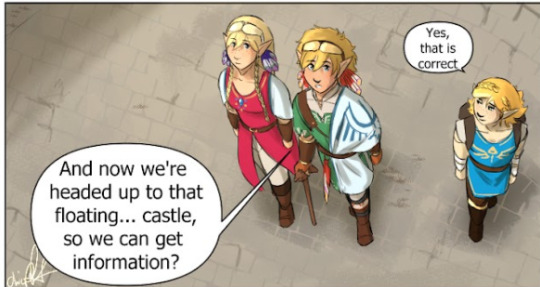
Sky's walking stick! I love how inclusive of all sorts of things this AU is i thoroughly enjoy it. He gives me the I can kill you with this walking stick, but also have you met my wife vibes and i love him.
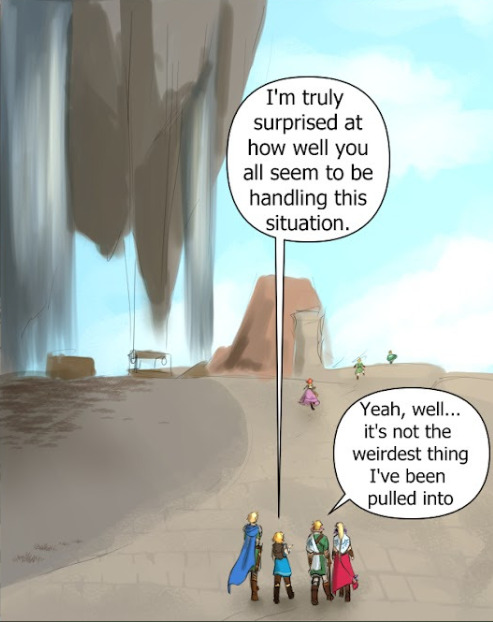
Time and Malon running off like this brings me great joy i love them.
And, sky. Are we talking about your journey or something else cause that's pretty ominous there. foreshadowing? Are we gonna get more about the past of these heroes at one point I'd love to know more about them.
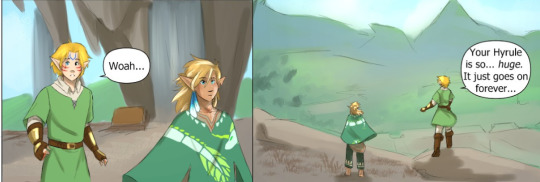
It is a massive Hyrule, espically when you think about just how long it takes to get across each of them in-game. Wild's game it actually takes so long to get across even just Hyrule field.
Time please step back from the edge you're giving me anxiety.
Also backgrounds my beloved. Beautiful i love them.
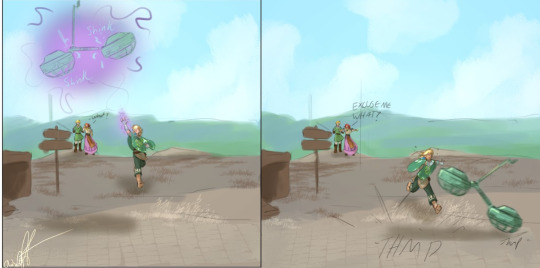
PFFFFFFT
OMG
When i tell you i was laughing at this for a few minutes i mean it oh my god this is wonderful.
And Malon?! OMG

I find this so damn funny. Its wonderful.
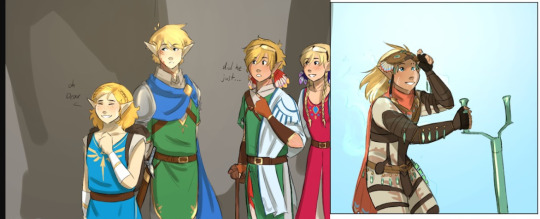
Im so glad everyone is confused it makes this 10x funnier.
(You think when they get to know each other better he'll let Sky/Sun have a go? I would love to see that so much.)
Also seeing Wild smile, Like really smile. The boy deserves the world.
Im glad he's having fun. Its also great to see Zonai tech being used after the events of the 2nd game like this.
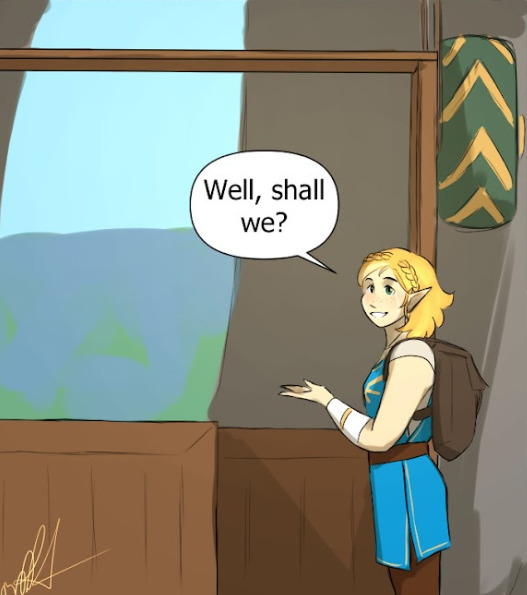
Yes, let's step into the wooden box of who knows what together? It'll be fun! :D
Flower, you gotta remember that these people have never seen this sort of thing, please explain.

Like you're doing right now flower? Like you're doing right now?
Everyone is so trusting of this box. I love it.

Just gonna say how GENIUS this is? LIKE A LIFT USING ZONAI WHEELS
I LOVE IT
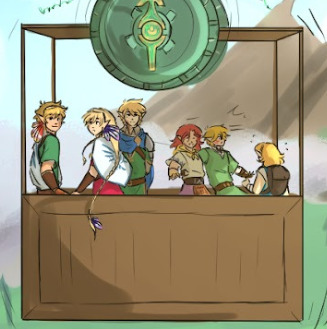
This tells a lot
Sky is just impressed, look at how happy he is. Wonderful bean
Sun is hanging out, (Is she holding his hand? Thats cute) :D
Captain the professional as always.
Malon and Time are the absolute chaos of the group. Just look at them, Time has obviously never seen something like this and so him being the one who's like basically fallen over here makes so much sense.
Got me cackling again tho, I love this group of idiots a healthy amount.

Them <3
I was thinking about it tho... And the sailcloths they are identical. And we know they are married...
What if the sailcloths are a sign of marriage in this universe? Why else would they both have the same one, down to the blue outline on the edge that is closest to them. Like you give your lover a meaningful symbol to show your love for them, and in Sky's case he made a sailcloth for sun after she made the one he's wearing for him during the events of Skyward sword.
I think its the same one because his one looks significantly bigger than hers, which to me tells of a practical use as well as a decorative or symbolic piece. 332
Like im probably reading too much into this but then again. They are so cute that they would actually do that.
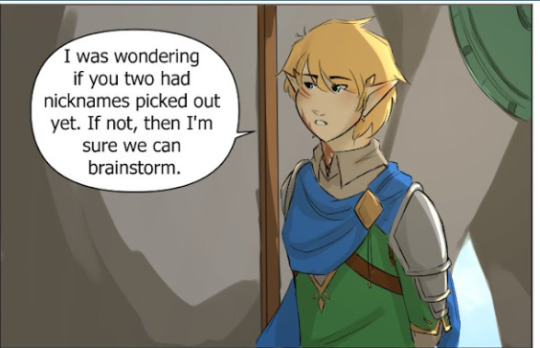
Captain pulling the absolute shenanigans of a group back on track. He is the brain cell of the group you can't change my mind.
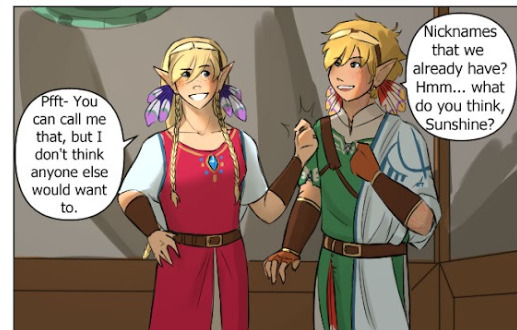
HE CALLS HER SUNSHINE AHHHHHH
I LOVE THEM
THESE TWO MEAN EVERYTHING TO ME
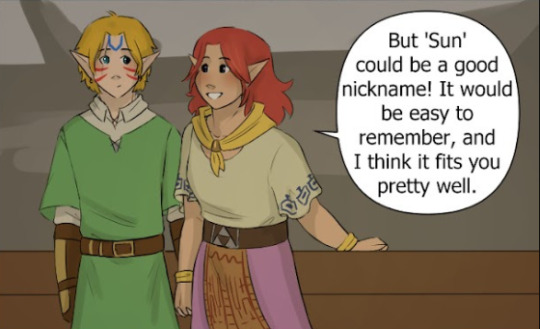
Why is everyone in this comic so damn adorable okay, these guys are just cinnamon rolls who saved the world.
Just look at Time's face? You can't tell me he isn't the most cinnamon of the rolls.
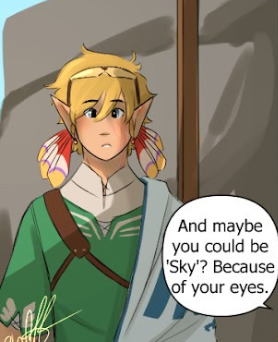
AWWWWWWWWW
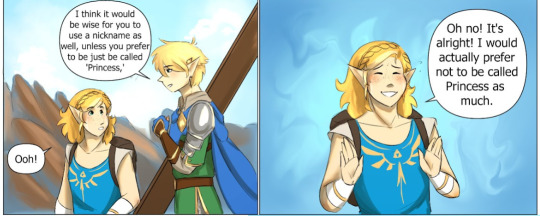
Have I mentioned how much I love Captain? Cause he is just so chill, but also professional. Professionally chill? Sure.
I can see a stressful situation coming up, and he just is the stoic leader who gets everyone in line and ready to fight the threat.
And flower, Who is just so sweet. I can understand not wanting to be referred to as princess now that their Hyrule is like how it is. I'm surprised this hasn't come up sooner. But it's cute.

Oh the silent princess. How symbolic you are.
I know people are not really into the flower thing but I am, you think we will see some nightshade at one point?
The flower.
The 2 flower heads, one open, one closed, The blue into white. With the yellow detail. It's Flowers colour pallet to a T and I love it. Maybe as we progress through the story we will see pictures of the silent princess again but with a flowering bud or maybe if something bad happens a slightly sad looking one?
I am obsessed with symbolism, so if those become a thing watch this space cause I will be excited about it!
(In fact looking at it I think, the stem in the middle and the yellow on her clothes are colour-matched. A nice detail!)
Okay thats all from me! :D
Have a great day/Night!
#recalled#recalled update#recalled Directionless#recalled Wild#recalled Flower#recalled Time#recalled Malon#recalled Captain#recalled Sky#recalled Sun#ramble corner with major#Sky is once again reminding me why he is the best blorbo#:DDDD#recalled spoilers#comic analysis corner with major#so many characters i love them all#i love making these sm#i wont stop#(unless asked)
19 notes
·
View notes
Text
Welcome to urfaveisroma <3 I saved this url out of spite, and if that's not pen then I don't know what is. This blog is primarily for celebrating and discussing Romani characters in comics, but I take submissions for Romani characters in other mediums and headcanon submissions, so long as they are appropriate.
ততততততততততত���তততততততত
Here are some basic rules and principles to follow. Failure to respect these rules and principles will earn you a block, so be mindful-
· If nai tu san gypsy then be quiet for the sake of devla [ie: gadje (non-roma) can follow and reblog my posts, but if you're going to be weird and racist, go away]. I do not strictly mind submissions/asks from gadje, but if you cannot be respectful, and if I find your submission/ask to be purposefully offensive, you WILL be blocked.
· Do not pester me with questions about Romani culture. Friends may come to me in private, but I do not feel comfortable answering to strangers on the internet. For one, it makes me uncomfortable because our culture is closed. For another, I am not an authority on Romani culture in every vitze and in every corner of the earth. We are not a monolith. If I feel the want or need to volunteer certain information to clear up misconceptions, I will.
· We use media literacy and critical analysis here, sir. Please do not come in my inbox and tell me a Romani comic character should not be Roma because they have been written stereotypically from time to time, especially if you aren't Romani. The fact of the matter is that characters of color across the board have been subject to racist and stereotypical writing on occasion. I do not advocate for the erasure of Romani characters' racial identities, just like I do not advocate for the erasure of any other nonwhite characters' racial identities. I advocate for the involvement of Romani writers, artists, consults, and sensitivity readers in the creative process for Romani characters in comics. I advocate for positive change, not negative change, and erasing what little representation we have in media is 100% a negative change.
All that being said, I’m not going to jump you if you make a misstep. Please don’t be afraid to send asks and chat with me because you’re worried you might say something wrong. If I feel that the mistake was made in good faith then I will correct it in good faith.
তততততততততততততততততততত
Some basic information about me:
I am a multiracial American Rom. My pronouns are he/him. I have not decided if I want to be public about who I am on this blog because I have been racially harrassed many times over for discussing Romani characters online, therefore I think maintaining some separation and anonymity on this blog will be beneficial for my mental health. If you must refer to me at all, you can call me chavo or Vic (yeah yeah kinnie moment, blah blah).
My favorite Romani characters in comics are Dick Grayson, the Maximoff twins, and (as you may have noticed) Victor von Doom- which...is basically every major racially Romani character in comics. I am very attached to them, so I love to be sent submissions/asks/posts relating to them!
তততততততততততততততততততত
That's all for now folks ;)
#urfaveisroma#romani#dc comics#marvel comics#dick grayson#pietro maximoff#wanda maximoff#victor von doom#eh they were mentioned so why not tag them#chavo speaks
23 notes
·
View notes
Text
And here is the Krista post that I’ve been mentioning in the Rashta analysis. Krista is like Rashta level 2 but less prickly, and she can garner way more sympathy compared to our other problem girl. This is going to be 100% spoiler because we’ve only seen her once and had a name drop in the English Webtoon comic.
Krista, for all that she is shares Rashta’s short term planning. But where she loses out is the fact that not only does she create short term plans, they are all doomed to fail because it hinges on one key fact that is not true. All of her actions really boil down to her not wanting to vacate her position of power, and is doing everything she can to retain it, social graces be damned. All of her plans hinge on marrying Heinrey. which does not work because our boy’s already got plans and Navier.
She says and makes displays of showing off that she’s in love with Heinrey and that she knows him best because childhood nobility proximity nonsense. But this hinges on a reciprocated relationship which it is not. Heinrey has no interests in her -- never had, never will. Also, he feels that it’s super awkward that his older brother’s wife is coming on to him? Yikes. She is part of the exiting power and marrying the next king is not quite how she should have gone about her plan if she wanted to stick around.
When Navier enters the scene in the Western Kingdom Krista does stuff where, the top right corner is constantly flashing, “Navier will remember that”, nonstop. If Heinrey did not bring in someone, Krista can go ahead with Operation Seduce the Other Brother (terrible, but more power to you I guess...). Krista allows her servants to unwittingly talk badly about Navier (as they didn’t know who she was at the time) and NOT reprimand them by saying she’s standing right there, on a tour around that palace on day 1 that KRISTA OFFERED TO GIVE. Pleads with Navier to have her keep her (Krista’s) servants and staff around, love-potions Heinrey, and all-in-all going forward with Operation: StOB. That only increases the likelihood that Navier will want to get rid of her from the palace altogether -- something that she is more than capable of considering she’s the incoming queen. As a result of her actions, Krista gets her staffed replaced and authority minimized and even Heinrey is pitching in on planning the wedding ceremony. Ultimately, it is Heinrey that really gives her the boot because of her shenanigans.
She literally could have retained her dwindling power in the palace and become Navier’s confidante and go-to person. She had the means if she just played her cards right. No major political power sure, but better than being sent off to a random mini-palace in the boonies with zero future. Not only did she get an early sendoff, it ends up being way worse if she just did nothing and went there on her own.
#remarried empress#jaehon hwanghu#i'm not even going into Krista actually buying into the playboy Heinrey persona bc it absolutely shows that she has no idea about#who Heinrey is as a person as it was a front for political espionage and solidifying his brother's rule
21 notes
·
View notes
Photo
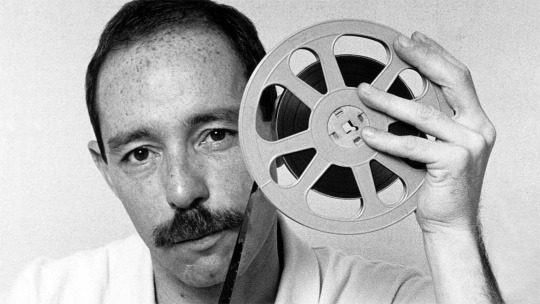
He Was Here.
On the anniversary of Vito Russo’s death from AIDS, filmmaker Jenni Olson remembers the activist and author, who helped so many—including Olson herself—crash out of the celluloid closet.
Back in 1986, when my film studies professor handed 23-year-old me a copy of Vito Russo’s book, The Celluloid Closet, little did I know how life-changing it would be. I would go so far as to say that Vito’s powerfully written analysis of the history of homosexuality in the movies actually saved my life.
First published in 1981, The Celluloid Closet covered the history of LGBTQ representation on screen since the dawn of motion pictures. Vito wrote about films as far back as Richard Oswald‘s 1919 Anders als die Anderen (Different from the Others), the German film considered to be the first gay feature, and Mädchen in Uniform, the beautiful and surprisingly political 1931 German drama considered to be the first lesbian feature.
Covering more than a hundred movies, the book spanned all the Hollywood stereotypes: the proto-gay sissies like Franklin Pangborn and Eric Blore in the 1930s; the creepy coded predatory lesbians of the 1940s and 1950s (like the prison matron in Caged); sensational trans depictions like I Want What I Want and The Christine Jorgensen Story, and half-lurid, half-comical bisexual tales such as A Different Story.
Vito revisited the book towards the end of the 1980s, incorporating some more recent achievements of the time, like the Academy Award winning documentary, The Times of Harvey Milk and beloved LGBTQ indie classics like Donna Deitch’s Desert Hearts and Bill Sherwood’s Parting Glances. (There is, naturally, at least one Letterboxd list of all the films in this revised edition.)
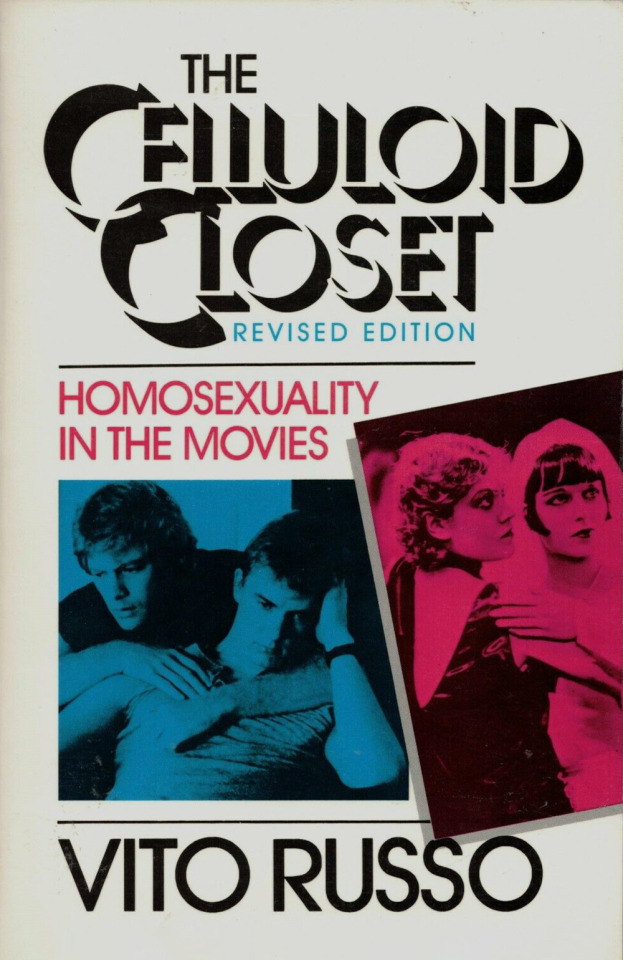
When The Celluloid Closet landed in my hands, I had been miserably stumbling along in college, and in life, for the previous five years. Vito’s book was the catalyst for my coming out to myself as queer (I wanted to see all those movies he wrote about) and for coming into the LGBTQ community (I imagined everyone else might want to see those movies too).
And so, despite having zero experience in how to do it, I started a weekly queer film series on campus, which brought hundreds of people out to the movies each Wednesday night. While there were certainly LGBTQ stories being told on screen in 1986, it was still an era where these films were much harder to access. Some were shown on television or available on VHS tape, but often these films had to be seen at film festivals or arthouse theaters.
The very first films I programmed in that series included some titles that remain among my favorite LGBTQ movies of all time: the aforementioned Mädchen in Uniform; the wonderfully romantic, 1968 French schoolgirl drama Therese & Isabelle; and jumping ahead to the indie gay films of the 1980s, Arthur J. Bressan’s devastating AIDS drama, Buddies (1985).
A few years later (with my University of Minnesota film studies BA in hand), I jumped in to become co-director of Frameline in San Francisco, the oldest and largest LGBTQ film festival in the world, and carved out a queer corner of the internet for movie lovers, co-founding the massive LGBTQ movie database, PopcornQ (aka “the gay IMDb”) as part of the world’s first major LGBTQ website, PlanetOut.
Along the way, I also worked as a queer-film critic, queer-film historian, queer-film collector, queer-archival researcher, queer-consulting producer (most recently on Sam Feder’s acclaimed overview of trans lives on screen, Disclosure), and spent a decade driving the marketing efforts of the oldest and largest LGBTQ film distributor in North America (Wolfe Video). And I made some films myself. (Yes, there is a Letterboxd list!)
At some point, Vito and I became friends. More than that, he became my mentor. He instilled in me a passionate belief in the power of LGBTQ cinema; in all the ways that films can give us the support and compassion, the inspiration and validation, the respect and dignity, the complexity and nuance, the joy and entertainment that we need and desire. And yes, even the messy and fucked-up representations, too. (Be gay, do crime, etc.)
Vito died of AIDS on November 7, 1990. As the 31st anniversary of his passing approaches, I’ve been thinking a lot about leadership, both personal and collective, and how we make positive change.
In addition to his groundbreaking work on that life-changing book, which was made into the tremendous, must-see 1995 documentary The Celluloid Closet, Vito had long been an important gay activist in New York City, eventually co-founding ACT UP in 1987.
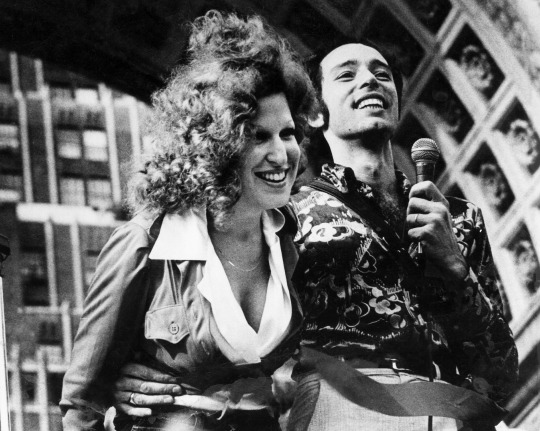
Russo with Bette Midler at the 1973 Gay Pride Rally in Washington Square Park, New York.
Vito was also one of the founders of GLAAD, the US-based LGBTQ media advocacy organization dedicated to (among many other things) improving LGBTQ representation in film and television. Since 1985, GLAAD has had an enormous impact in transforming the on screen landscape with regard to LGBTQ characters and stories, cast and crew, coverage and visibility of queer cinema.
This year—this is such a beautiful and deeply moving thing for me—Vito’s mentorship came full circle. I now work for GLAAD. It is my actual job, every day of the week, to carry on his legacy.
As director of our Social Media Safety program, I advocate for LGBTQ user safety around content moderation, data privacy, problematic algorithms and other forms of tech and platform accountability (yes, including Letterboxd). I also get to be involved in some of GLAAD’s other media advocacy work.
One of the most impactful things that GLAAD produces each year is the Studio Responsibility Index, which evaluates each of the major Hollywood studios and serves as a road map toward increasing fair, accurate and inclusive LGBTQ representation in film. There’s an equivalent publication covering the television industry: the Where We Are On TV report.
GLAAD’s most public media advocacy work is the annual GLAAD Media Awards, honoring fair, accurate and inclusive representations of LGBTQ people and issues in film, television and other media. (Submissions are open until December 7, 2021—if you’ve made something, make sure we know about it.)
Every year the event honors Vito’s legacy with the presentation of the Vito Russo Award to an openly LGBTQ media professional who has made a significant difference in promoting equality for the LGBTQ community. Recent recipients include George Takei, Billy Porter, Samira Wiley and Ryan Murphy.
In an interview with Making Gay History author and podcast host Eric Marcus, Vito talked about the legacy he wanted to leave, citing Spanish filmmaker Pedro Almodóvar.
“He said, the thing is, is you can’t regret your life, otherwise why did you live? What was the point of having a life if you didn’t say something or do something that was gonna survive after you’re gone… I really feel the reason why I’m here is so that I could leave this book and these articles so that some sixteen-year-old kid who’s gonna be a gay activist in the next ten or fifteen years is gonna read them and carry the ball from there.”
I love the thought of how amazed Vito would be if he could see what LGBTQ representation on the big screen looks like today compared to where we were when GLAAD was founded 36 years ago—in large part because of his leadership.
Let me just shout out a few Letterboxd lists that so vividly illustrate this point: Intersex, LGBT POC, Films featuring LGBTQ characters/folks with disabilities, LGBT+ films from Southwest Asia and North Africa, TRANS, South Asian LGBT, Directed and/or written by transmascs and trans men, Todos Me Miran: The Queer Latinx Experience. And hey, if the movie list you want—or indeed the movie—doesn’t exist yet, may this be the inspiration that prompts you to create it.
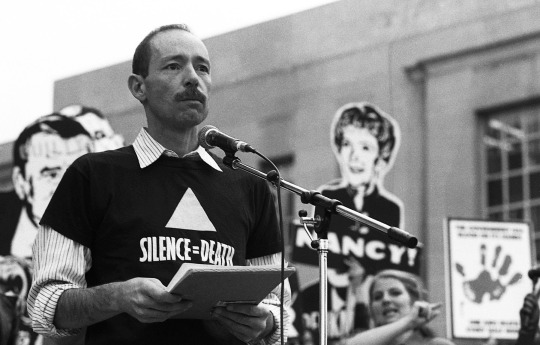
Activist and author Vito Russo. / Photo by Rick Gerharter/HBO Documentary Films
You can learn more about Vito in Jeffrey Schwarz’s beautiful 2011 documentary, Vito. And, you could begin applying GLAAD’s Vito Russo Test to your movie-watching habits. Briefly: a film must include an identifiable LGBTQ character; who is not solely defined by their sexual orientation or gender identity; and, the character must matter to the plot. This short video on GLAAD’s YouTube channel explains it more—there are already many Vito Russo Test lists scattered across Letterboxd.
Lastly, follow GLAAD’s brand new Letterboxd HQ account, where you can discover some of the best LGBTQ films of the past few decades via our lists of GLAAD Media Award Winners. A quick name drop of a handful of those honorees over the years just to whet your appetite: The Wedding Banquet, Pariah, Go Fish, Brokeback Mountain, Moonlight, The Incredibly True Adventures of Two Girls in Love, Call Me by Your Name.
Grazie, Vito!
Related content
World AIDS Day is December 1—Here’s a Letterboxd list of films that ensure we never forget.
Rebel Dykes, a documentary mash-up of animation, archive footage and interviews about a radical lesbian subculture in 1980s London, opens in UK and Irish cinemas from 26 November (US release TBA)
All the Good Boys: Schlockvalues’ essay for Letterboxd on the real roots of queer cinema and the evolution of gay masculinity on screen
16 notes
·
View notes
Note
Katara loves Aang. Zuko loves Mai. What’s canon is canon. There’s nothing you or anyone can do about it. Move on with your life.
It’s also canon that Aang was ready and willing and about to murder Zuko at the drop of a hat in the comics. It’s also canon that Katara was a sad and lonely old lady who accomplished literally nothing as an adult (and didn’t have a single statue to show for it), to the point where she didn’t lift a finger when her entire family was in danger to try to save them. It’s also canon that Aang and Toph were terrible parents who left their older children with psychological scars that persisted well into middle and old age.
Who cares about canon? Since when has something needed to be canon to be worthwhile? Since when has canon mattered--particularly when it’s poorly written and makes no sense (both major romance arcs in AtLA, for example)?
Frankly, I don’t think I’m the one that needs to move on with my life. I’m perfectly happy in my zutara bubble with the amazing fanworks we consistently produce, the great meta and analysis, and the wonderful community we’ve formed. I certainly don’t feel the need to go into, like, Kataang or Maiko shippers’ inboxes to tell them how wrong they are for stanning couples that I find to be terribly written and lackluster.
Maybe you should accept that some people don’t vibe with canon and prefer to stick to their fanon corners and move on with your life, huh?
#atla#zutara#kataang salt#maiko salt#just covering my bases#asked#who really needs a life here tho lmfao#me who has a blast reblogging great fanart and reading & writing fics of my fave pairing#or you who feel the need to come in and remind me what canon says#as if i didn't already know#as if i hadn't thrown canon out and stuck to my fanon years ago lmfao#i'd say nice try but i dont think you tried at all#Anonymous
700 notes
·
View notes
Text
The Bad Batch and Axe/Knife Throwing
A/N: Uhhh I’ve had this in my drafts for weeks. I don’t actually know what this is. Just funky bro stuff that spiraled into like 2.5k words because I just don’t know when to stop, do I. The working title for this was “Bullshit and Bullseyes”, if that puts anything into perspective (I nearly made that the actual title haha). Anyway. Enjoy?
Technically, no; they didn’t need to spend credits on booking the space. By all accounts, there’s nothing wrong with chucking weapons against the Havoc Marauder’s hull. You wouldn’t believe the damage it’s withstood over the years.
Nevertheless, its walls had been taking quite the beating lately (honestly how many times has it actually been said “no weapons in the house”?) and quite frankly, Hunter was getting sick of grousing about the fact.
But when you’ve been cooped up in the vacuum of space for days as the Bad Batch has, you become acutely aware of the perpetual sensation of losing your mind—and of the stagnant air beginning to fester.
Let’s put it this way: Intelligence work is not kind to four Super Commandos, who’d just as soon wrangle a herd of Gundarks than allow anymore strategic analysis to keep them huddled around a comm system for days on end with no intermission in sight. It can’t be stressed enough the way this work was far, far beneath them. They’d just as soon tell High Command to get on with the invasion already (where their skill sets actually applied) and that if they want Clone Force 99’s help, they had best find a better way to hold their attention, because “tapping into enemy comm channels” ain’t worth a damn.
But, until then: there were other things that would do the trick.
Back within the planet’s gravitational pull once again, the Bad Batch prioritized their short timeframe of respite by not actually participating in the act of respite at all, instead seeking out the nearest weapons range. It felt something like freedom upon discovery.
The axe throwing establishment was practically empty when they arrived, which was the driving force in their eagerness, having booked the last session of the night. More room to work.
And, no one to tell you you can’t bring your own arsenal.
Hunter removed the strap of his weighty knife bag from his shoulder and set it down as the boys settled in their designated lane. While Wrecker and Crosshair dove for the bag like deprived womp rats, Tech had more gracefully found a spot on the nearest bench and planted himself to it, tapping away at the little box atop his vambrace. Predictable.
“Don’t even give me that look, Hunter,” Tech didn’t even look up, already privy to the quizzical gaze while fixated on his slew of technology. “You knew good and well I would be taking notes and collecting data during this session for the purpose of enhancing our overall performance going forward.”
As if he hadn’t been taking an infinite amount of notes the past five days.
“How ‘bout you take some notes on how to have fun,” Crosshair mumbled through the toothpick he anchored to the corner of his lip (Hunter always felt nervous when he worked out or trained with that thing in, just waiting for the day he finally chokes). The sniper didn’t bother looking back at Tech as he rummaged through Hunter’s bag in search of knives he deemed fit. He grinned wickedly at a particular set of five, all of them airy and tapered and perfect for his nimble fingers to sidle around. They were similar in size, if only a few inches wider, to the darts he usually threw in his quarters. He considered them with a sleight of hand, quickly piecing together an accurate projection of air velocity and the weapons’ overall weight.
Crosshair would make his mark. He always did.
It further came as no surprise that the Sergeant excelled in his turns from the get-go. He wasted no time in nailing bullseye after bullseye with a variety of weapons big and small. It was comical, the way Tech would make sounds of marvel and adjust his recording lens accordingly when Hunter would nail a pair of axes with a backwards throw or something of dramatic flair.
And Wrecker, oh, Wrecker.
Let’s say his turn was cut rather short—as were the rest of his brothers—when his very first throw, bearing as much care a demolition expert could muster, drove straight through the target in its entirety and brought the entire structure down wall-to-board. Hunter shuddered, grimacing instinctively at the harsh clang of colliding metals and wood that ended in a timbering heap.
Wrecker merely flashed a sheepish smile.
Hunter bit back his frustrated sigh, but the one expelling behind him was unmistakable. He whirled around to find the sensation to be correct, and that the expression marring the Devaronian’s features was unsightly.
Great. The owner of the establishment.
“I’ll pay for that,” Hunter offered immediately, gesturing awkwardly to the ghastly pile of materials. It was an auto-pilot response, really; Hunter was used to cleaning up after his rowdy bunch by now.
“Got that right,” the Devaronian rumbled, cracking his brooding knuckles as a statement that seemed more mindless than anything; he must’ve realized it foolish to get into it with four Super Clones. He turned around and stalked off, but not before grumbling something about the Clones being “mindless rank weeds” and “no better than droids”.
Wrecker must not have heard thank the Maker, otherwise the entire building could’ve been brought down on their heads in nothing short of an emotional outburst. Crosshair simply threw a crude gesture to the Devaronian’s retreating backside. It was either that or the knife in his hand.
“Cross, put your finger down dammit, we’re trying not to cause trouble here,” Hunter hissed. “You really wanna piss off a Dev?”
“You really wanna piss off a Crosshair?” Wrecker interjected with a wicked chuckle, always at the ready to tango with Crosshair and trouble.
He had a point, though.
Crosshair made a deep scoffing noise in his chest and simply turned his attention back to the dilapidated target. The sniper with no fear. Or so he’d like everyone to believe.
“Sorry, Sarge,” Wrecker rubbed at the back of his thick neck, having gone back to anxiously surveying the damage.
“Let’s just switch lanes,” Hunter countered coolly, helping Tech gather up their weaponry and move over one. It’s not like the owner would let him (or his pocket) forget, so there was no use worrying about it.
With a fresh target and a fresh turn at the ready, Wrecker eagerly began to ask for a re-do with the axes he skewered with moments ago only to be let down—gently, of course. Hunter wasn’t a mean brother, for fierfek’s sake.
He felt a bit guilty over limiting Wrecker’s turns but honestly, what was he thinking, bringing them to a place like this? It’s too... normal for Commandos—whatever ‘normal’ is. They would’ve been better off back on the Marauder.
No they wouldn’t have.
Maybe that’s why Hunter willingly ventured out on a weekend evening in the Coruscanti Districts for that sense of normality for he and his brothers; as if it could actually be found in the bustle of city life and whatever resided within.
It’s not that he wanted them to fit in, per se—Hunter can speak for the four of them in that they’re secure in their abilities and standings. But it’s as if he wanted something... grounding. In the middle of a war. Certainly a foreign term to both soldiers and citizens alike.
Grounding. Something to give the boys a sense of fulfillment and a taste of youth, even if only for the night. No expectations, no methods. Just Serotonin and sibling rivalry. Fulfillment.
Wrecker was certainly feeling fulfilled over the knives he opted to throw instead, much lighter and more controlled than the axe—which was a shame, really; he was very good at them. You haven’t quite lived until you’ve seen Wrecker at full capacity in his brute strength. The axes were just an inkling of his potential. Despite the fact that the majority of knives completely disappeared in his wide expanse of palm, he could still stick them with deadly force. Tech especially made relevance of the fact, insisting he show Wrecker a recap of his feats later.
When he wasn’t recording and plugging in data for the other throwers, Tech went a few rounds with Hunter’s smallest knives: quick and sleek and agile, much like the goggled member himself. The preference of axe or knife was divvied between the group: axe’s were more Hunter and Wrecker’s thing while knives were more Tech and Crosshair’s.
It took a bit of encouragement for Tech to actually complete his turn, as he was more concerned with the preliminaries and technicalities instead of the actual throwing. He’d stand there for what felt like several minutes, considering and trying to incorporate the use of his tech until Crosshair—how dare he—cut through his concentration with a sharp demand to “Just. Throw.”
It was rather unfortunate that there was only one target available to four people wanting to use it simultaneously. It seemed the members of the elite Commando squad still hadn’t mastered the art of patiently waiting their turn.
Hunter couldn’t help but find the hilarity in that Tech managed to land several of the knives as ‘butt sticks’: handle side in. He chuckled to himself. Only Tech.
The engineer claimed the act was wholly intentional. Hunter thought his witty brother was just trying to excuse a simple over-rotation. Tech had the aptitude for speed under his belt, but sometimes he had trouble controlling his speed. But if you thought that hindered Tech’s ingenuity or prowess in the slightest, you were sorely mistaken.
It’s times like these Hunter felt that familiar swell of pride in his chest as he relish his brothers’ unique array of strengths, weaknesses, and opportunes. All of it played a monumental part. The Sergeant in him couldn’t ask for a more proficient squad. The brother in him couldn’t ask for more unique siblings.
In no time, all four men had each accumulated their own sheen of sweat, the byproduct of a solid hour’s workout—no, two hours (Hunter should know by the way he grudgingly dumped another handful of credits into the Devaronian’s on the hour), their allotment extended all because the bros refused to be done, reduced to acting like petulant children because of.
Speaking of petulant.
“Who’s in the lead now, Tech?” Crosshair asked through a lingering pant, breaking from his turn as he took a seat next to the human scoreboard. He accepted the cool rag Tech handed him with a curt nod and slung it over the back of his neck to soak up the sweat, rolling his toned shoulders and shaking away the thought of potentially having to break from the rifle tomorrow because of how much he overdid it with the knives. Sore shoulders made for shit shots.
Tech chewed his lip and shot a single, timid glance up to Cross, who suddenly realized that maybe the gifted rag rapidly warming behind his neck was actually just an act of grooming for the disappointing news to come.
Tech cleared his throat. “In the current overall standing, it appears that Wrecker takes the lead, with Hunter a very close second, me of course making the ranks, and you being last—”
“Aw hell no,” Crosshair yanked the rag off and threw it to his feet as he pulled the toothpick out from between his now grit teeth, jabbing it around the room in emphasis. “I’ve easily got the best aim around here, I ain’t the one who destroyed an entire target and I didn’t miss one damn time—”
“It is not about missing, Cross; there are many factors to consider in the overall performance,” Tech answered matter-of-factly, with maybe the slightest hint of sympathy (more like irritation) laced within.
“And that includes humility,” Hunter chimed in, crossing his arms.
Wrecker and his lack of knowledge on appropriate social cues left him cheering over his victory, and Hunter forced himself to swallow the smile tugging at his lips. Few things in life filled him as much as Wrecker’s youthful exuberance. It was infectious.
He gave a light shove to the solid mass of man. “That means you too, Wreck.”
“Bullshit...” Crosshair sulked, numbingly processing his loss. He found himself leaning into Tech’s supportive pat on the back, suddenly too tired to care about his dwindling dignity or even any of his prior winnings in the past. He’ll forever be consigned to his dangerous competitive streak and that’s that.
“You’re just a sore loser!” Wrecker was grinning wide again, all teeth and triumphant. Crosshair scowled further and yes, he was actually pouting up from his spot on the bench thank you very much. Blackmail him later.
“The only thing that’s gonna be sore is your ass when I shove my foot up it.”
“Hey.” Hunter’s cue to intervene. “Settle it down. We had a good run tonight, blew off some steam, got a nice workout and stretched the legs. Let’s head back home, yeah?”
Hunter received murmurs of agreement save for Crosshair, who responded with silence, which was his answer.
The Bad Batch gathered their things and headed out, with Hunter paying the owner for the property damage on the way (reaching up to smack Wrecker in the back of the head just for good measure), and the alien made no attempts at subtlety in his relief over the way the chaotic bunch were finally departing. Apparently, the Bad Batch showcased some of the more poorer examples of decent clientele.
Funny that one might assume ‘decent’ and ‘Coruscant’ actually go together.
As they emerged back into the flow of the planet-wide city, the near-midnight breeze quickly catching in all of the sweat spots, Wrecker stopped in his tracks, having been eyeing a dejected Crosshair on the way.
“Hunter?”
“Yeah, vod?”
A timid pause. “Can we get ice-cream? I think Cross here could use some. With sprinkles and a starcherry on top, just how he likes it.” Wrecker scooped up the lanky brother in question, who squawked in protest. “And a nice, squishy Wrecker hug.” He pet Crosshair’s head. “That always helps him feel much better about me winning.”
#wrecker is so thoughtful XD#lol idk I’m sorry guys#star wars#the bad batch#clone force 99#do y’all actually want this idk#I will happily take requests on things you DO#requests are always open for blurbies or whatever :)#butt sticks are a real thing btw#that’s how I land mine XD#my writing#it’s a lil thing
33 notes
·
View notes